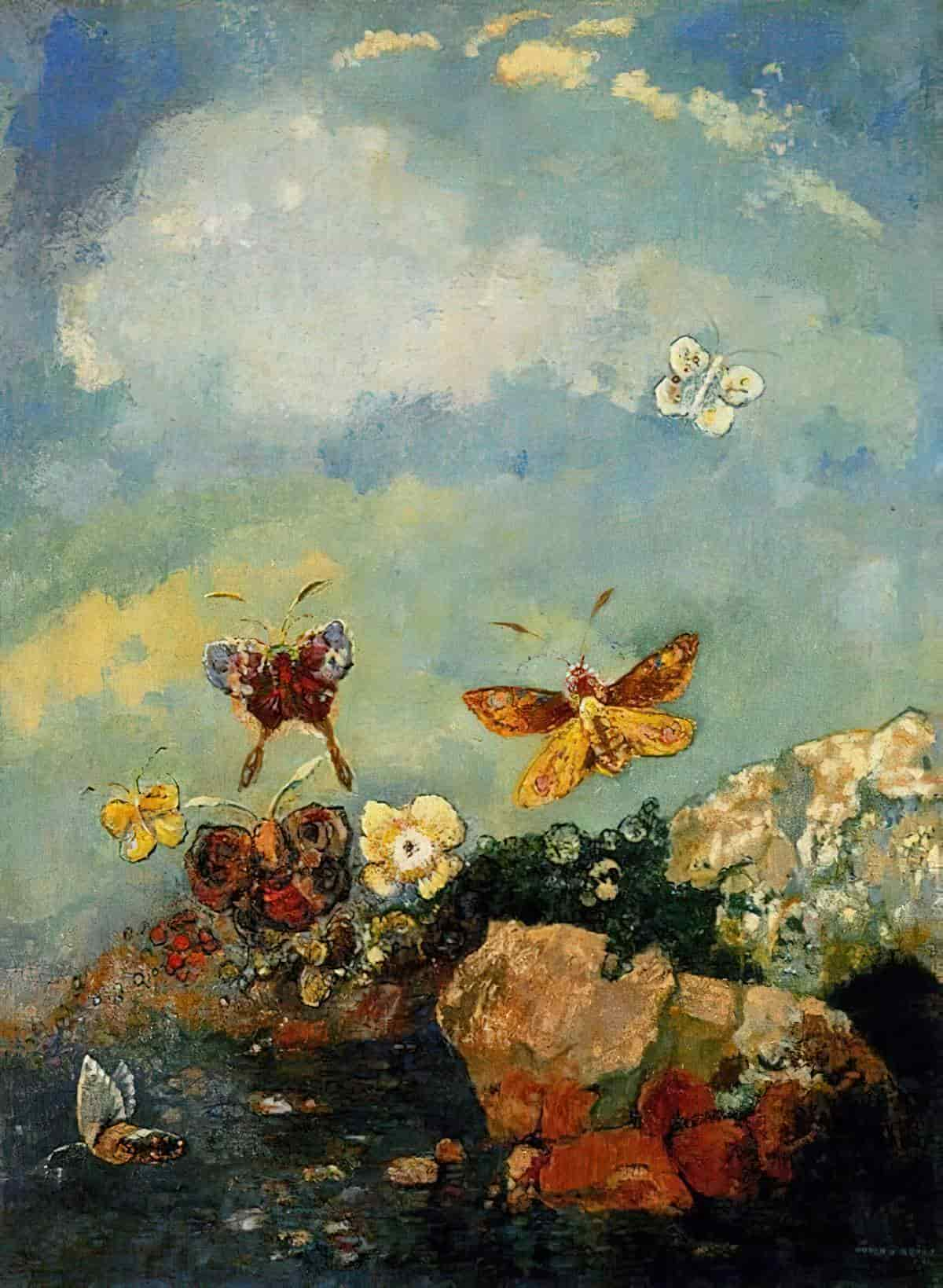If you grew up in the West, butterfly symbolism may seem obvious: Butterflies symbolize transition and transformation, right? They start out as caterpillars, hibernate inside a chrysalis for a while and emerge as these beautiful flying creatures.
The link between butterflies and transformation may seem obvious to contemporary Westerners but in fact butterflies, caterpillars and moths mean different things to different cultures and to people living at different times in history.
First, let’s look at prehistoric times. Believe it or not, we do have some information about butterfly symbolism from way back when!
BUTTERFLY SYMBOLISM IN PREHISTORIC TIMES
The butterfly symbolised regeneration, alongside other similar symbols:
[In prehistoric times], the goddess of regeneration was connected with the snake, which loses its skin, and the butterfly, which is a consequence of transformations: both seem to be reborn. (The butterfly image is sometimes perceived as a double ax, but it predates the metal ax by several millennia.)
Other images of regenerations are the caterpillar, the crescent of the moon, and the swift-growing bull’s horns. Images of females with large chickenlike bodies holding eggs seem devoted to the power of latency. The ‘Lady Bird’ figure — a woman’s head, a bird’s body with an egg in its buttocks, and a phallic neck — was ubiquitous in Old Europe until the infiltration of the area by Indo-Europeans in the fourth millennium B.C.E. After that, she vanishes, but reappears later Greece, Minoan Crete, and the Aegean Islands.
Beyond Power: On Women, Men and Morals by Marilyn French
Among the ancients, [butterflies served as] an emblem of the soul and of unconscious attraction towards the light. The purification of the soul by fire, represented in Romanesque art by the burning ember placed by the angel in the prophet’s mouth, is visually portrayed on a small Mattei urn by means of an image of love holding a butterfly close to a flame.
The Angel of Death was represented by the Gnostics as a winged foot crushing a butterfly, from which we may deduce that the butterfly was equated with life rather than with the soul in the sense of the spirit or transcendent being.
This also explains why psychoanalysis regards the butterfly as a symbol of rebirth.
A Dictionary of Symbols by J.E. Cirlot
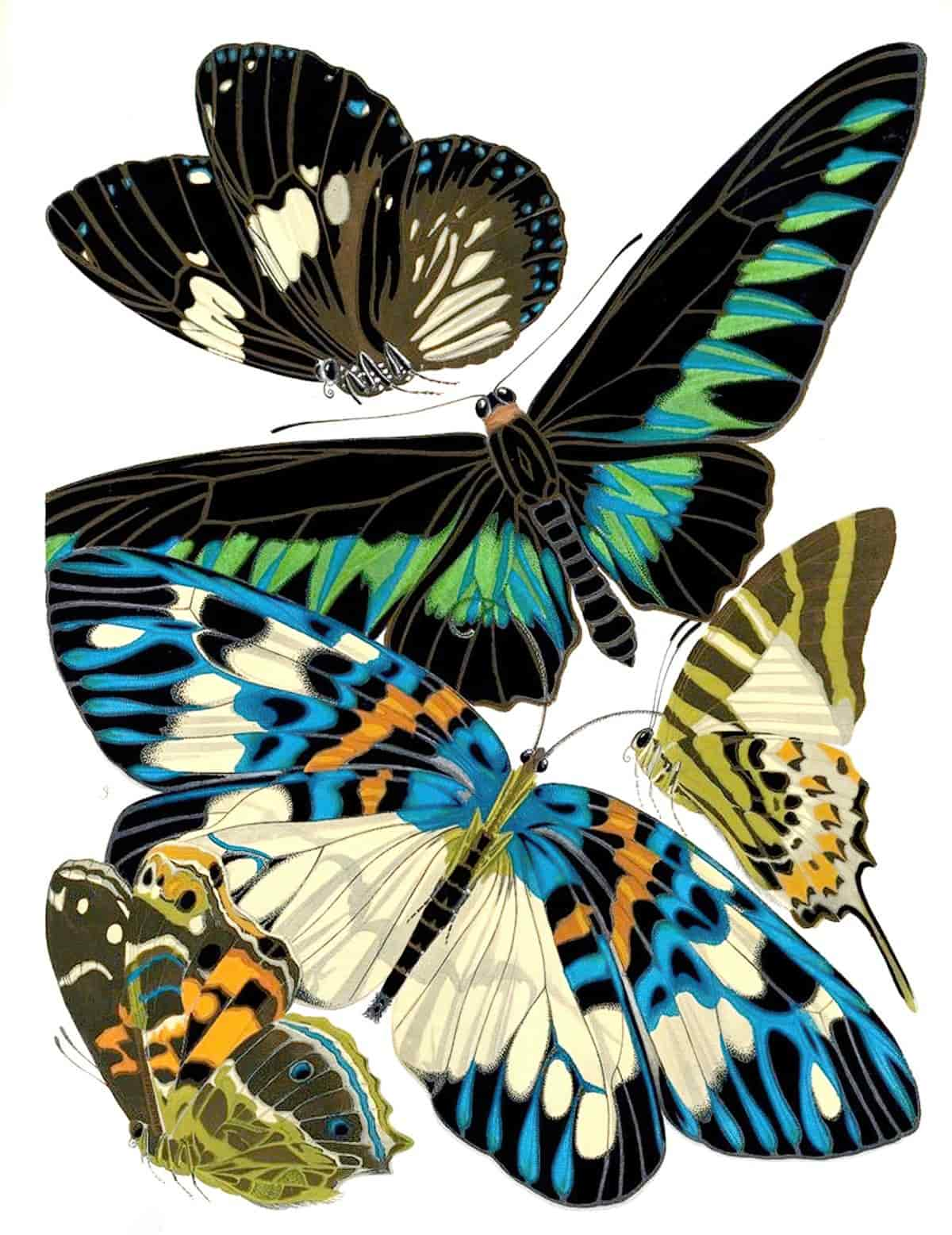
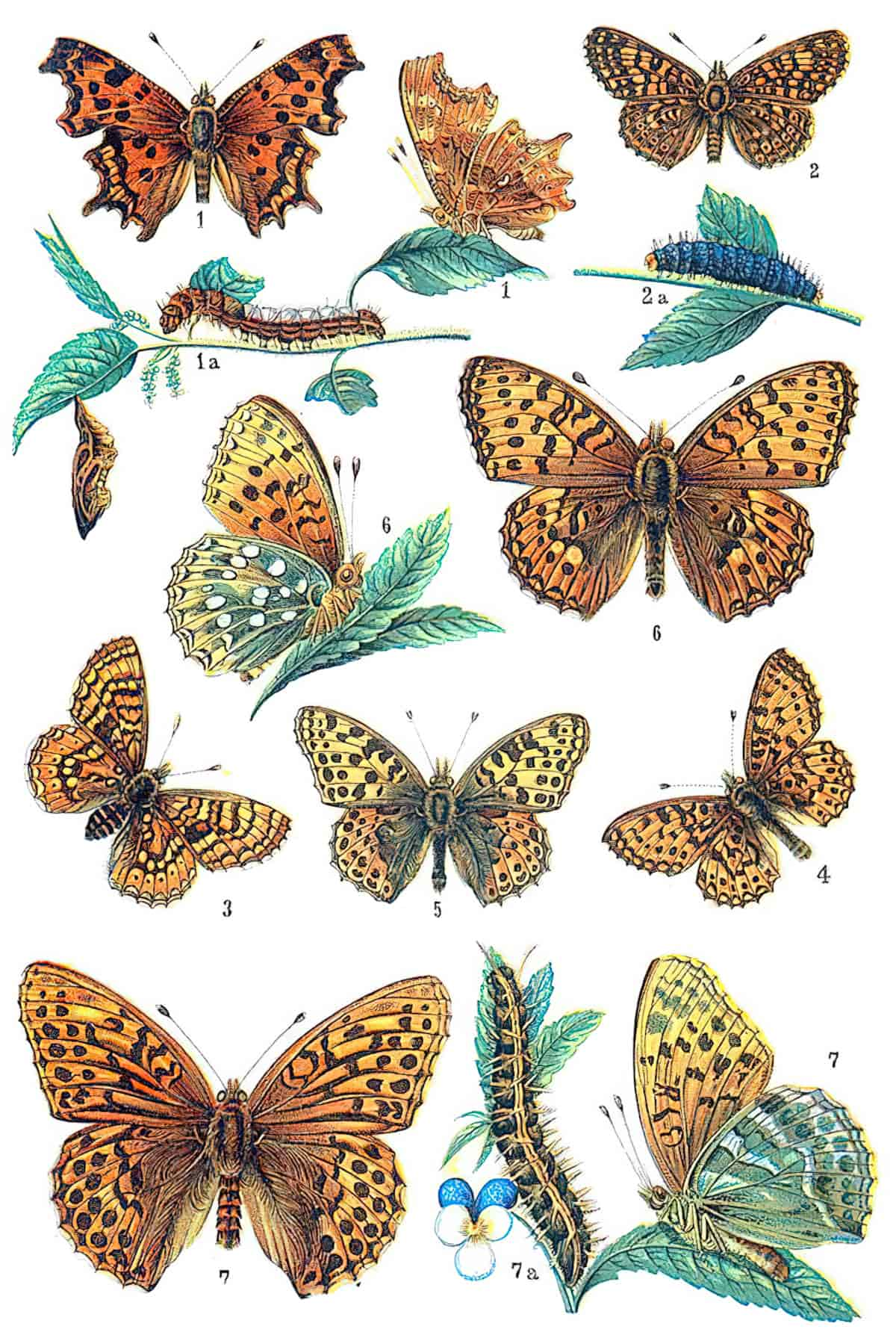
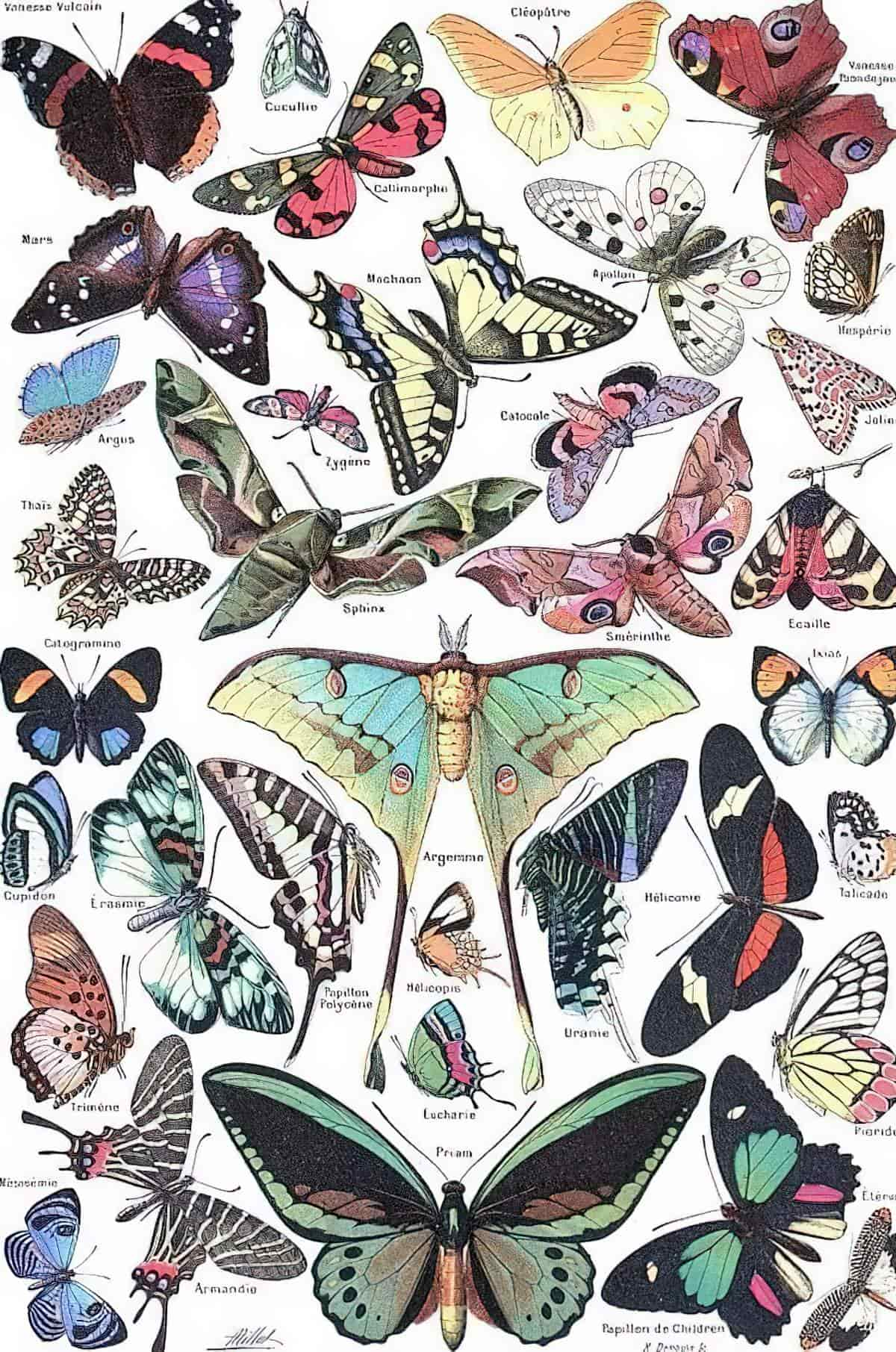
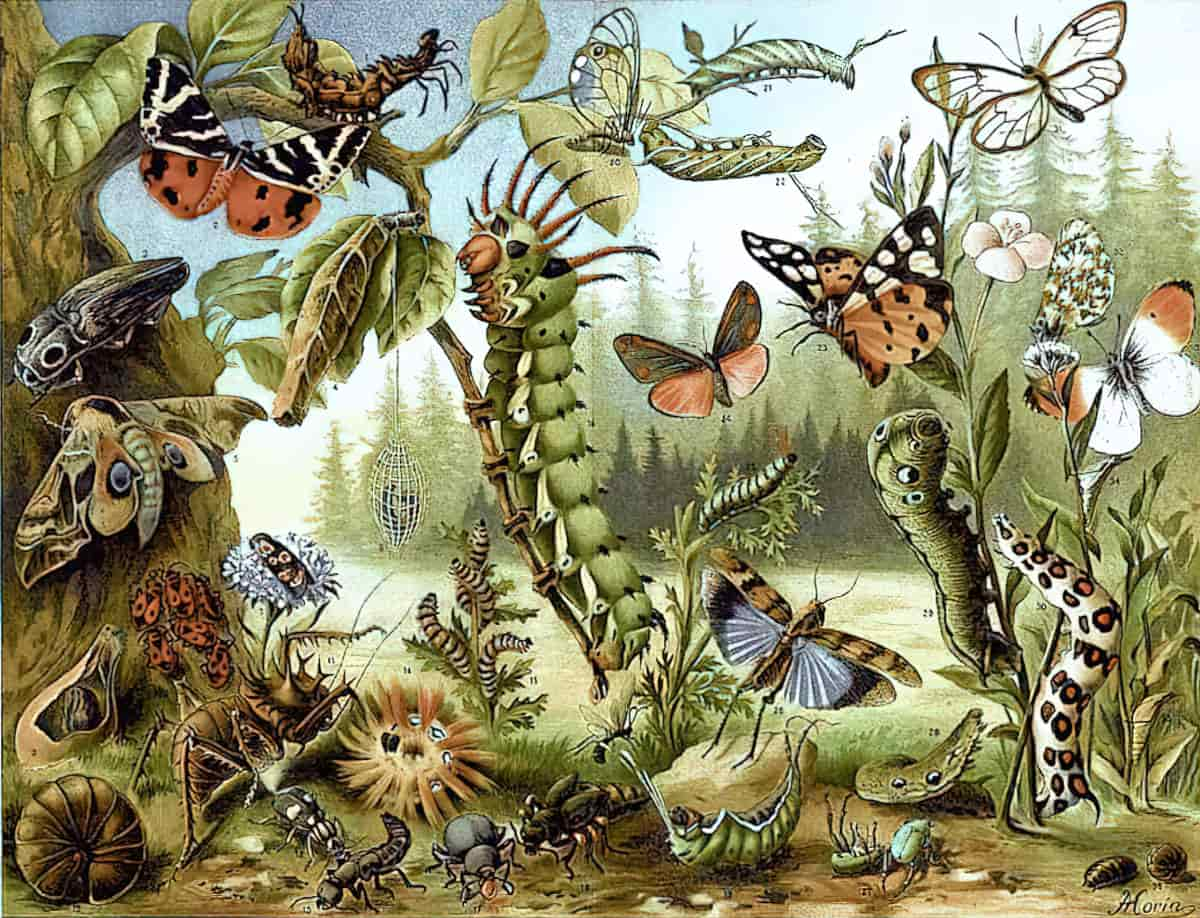
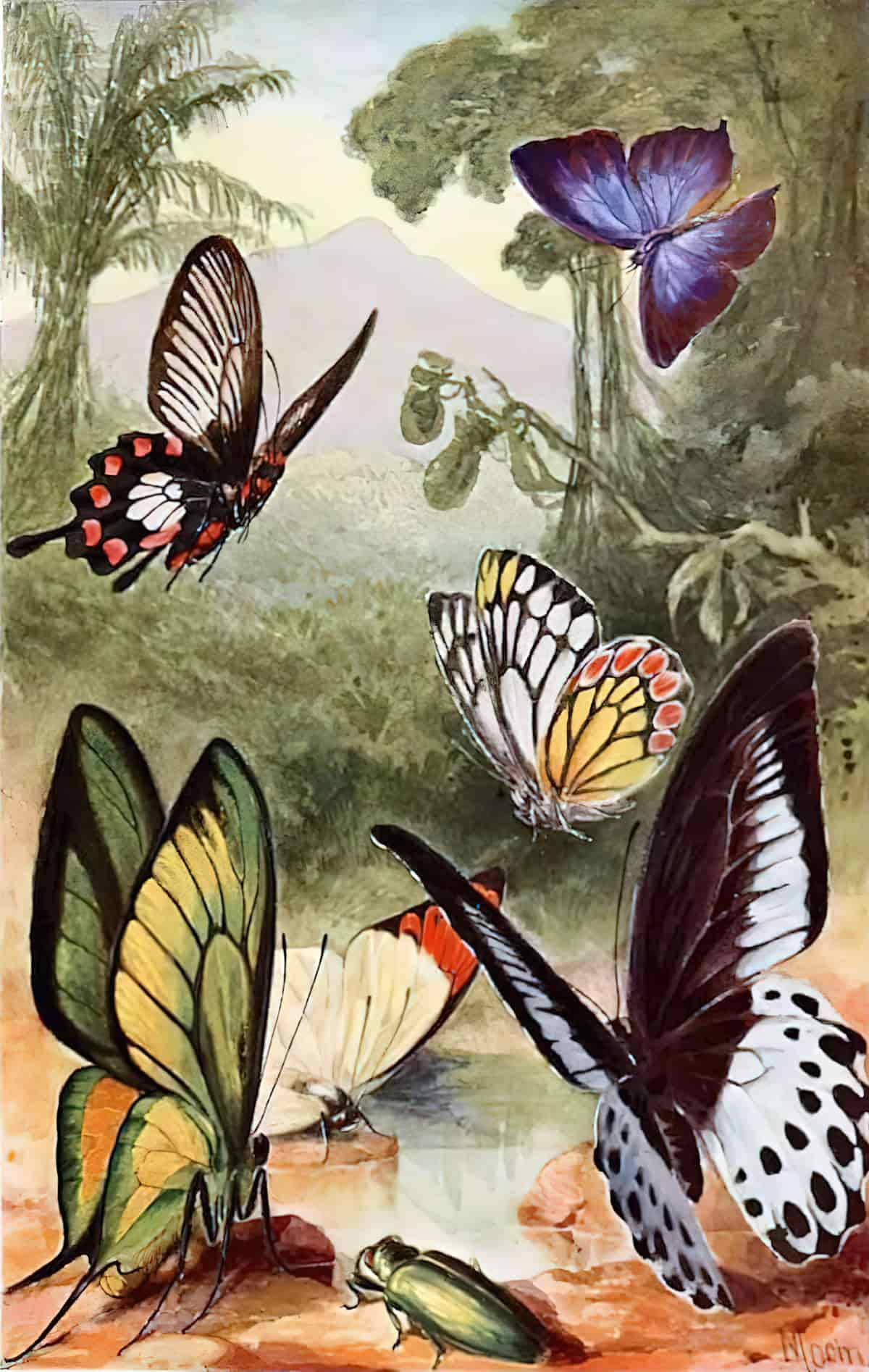
BUTTERFLY SYMBOLISM IN MODERN CHINA
Butterfly as symbol of regeneration hardly seems foreign to contemporary Westerners, even though there’s several thousand years between us and them. For a completely different take on butterflies we only need go to modern China. Below, Kate Bornstein writes about the Chinese translation of her book Gender Outlaw, and issues around choosing a Chinese title. It’s important to note that Kate Bornstein is a trans woman and the book is about being transgender:
When you translate the playful title Gender Outlaw into Mandarin, it comes out as the not-so-playful Sex Criminal. So my Chinese publisher, New Star Press, asked me for some other titles. I rummaged through my mind for familiar gender metaphors and hopped onto Skype with my translator, Liao Aiwan, who uses the pronouns they, them, and theirs.
“How about Gender Is a Butterfly?” I suggested.
“No, no,” they said. “This book of yours is a radical a call to gender activism. To a Chinese reader, butterfly makes it seem like a fluffy children’s book. But the butterfly metaphor is certainly in the right ballpark.“
I suggested Gender Is a Cocoon, and they explained to me that to a Chinese mind, the image of a cocoon conjures the panic that comes with claustrophobia. We both stared at each other blankly. Then their face lit up.
“Gender Is a Caterpillar!” It’s perfect!”
“Ah,” was all I could think to say.
Liao Aiwan explained that, to a Chinese reader, the caterpillar stage conjures the notion of great possibilities. “That’s what you’re trying to say about gender, isn’t it? Possibilities?”
I nodded; yep, that’s what I was going for with the book. They continued excitedly, saying that we should use the child’s term woolly worm because that gets us back to playful. And so, if you want to buy this book in China, look for the title Gender Is a Woolly Worm.
from the introduction to the revised edition of Gender Outlaw by Kate Bornstein (2016)
For Chinese people then, the chrysalis is seen as an unpleasant thing. They’re not far wrong, probably. The caterpillar is made of cells which can become anything. When they’re inside their chrysalis, they turn into a sort of gooey caterpillar soup. It’s really quite disgusting. Imagine the human equivalent of that.
Okay, well, I may be exaggerating. Here’s a more accurate description of what’s going in there:
“People always thought that during metamorphosis the caterpillar turns to soup and all the ingredients are rearranged into the butterfly or moth,” says Weiss. “That clearly isn’t what happens. Parts of the brain are retained that allow memories to persist through this very dramatic transition.”
New Scientist, Butterflies Remember Experiences by Phil Mckenna, 2008
However, the Western idea of transformation doesn’t include the idea of ease. Transformations can be messy, complicated and difficult. In fact, that’s what they mostly are. Butterflies go through phases of darkness and dissolution before they can emerge in a different form. The chrysalis is a nice tidy symbol because we don’t have to see what’s going on inside (much like a womb).
Life is nothing if not a series of transitions — births and deaths and breakups and new loves and new jobs and cross-country moves — with new parts of ourselves illuminated and integrated along the way. If anything, those small moments of calm between transitions are the exceptions. They’re certainly not the destination.
Thomas Page McBee, Amateur: Transitioning Is Not as Simple as “Before” and “After” Photos Show
BUTTERFLY SYMBOLISM IN JAPAN
In Japan, if a butterfly enters your guest room and perches on a bamboo screen, the person you love most is coming to see you. Butterflies are a symbol for girls as they transition into women.
Two butterflies dancing around each other is a symbol of marital happiness.
However, when butterflies come in large numbers, they are not a good omen. (This is true of any animal which arrives in large numbers — it generally means pestilence!)
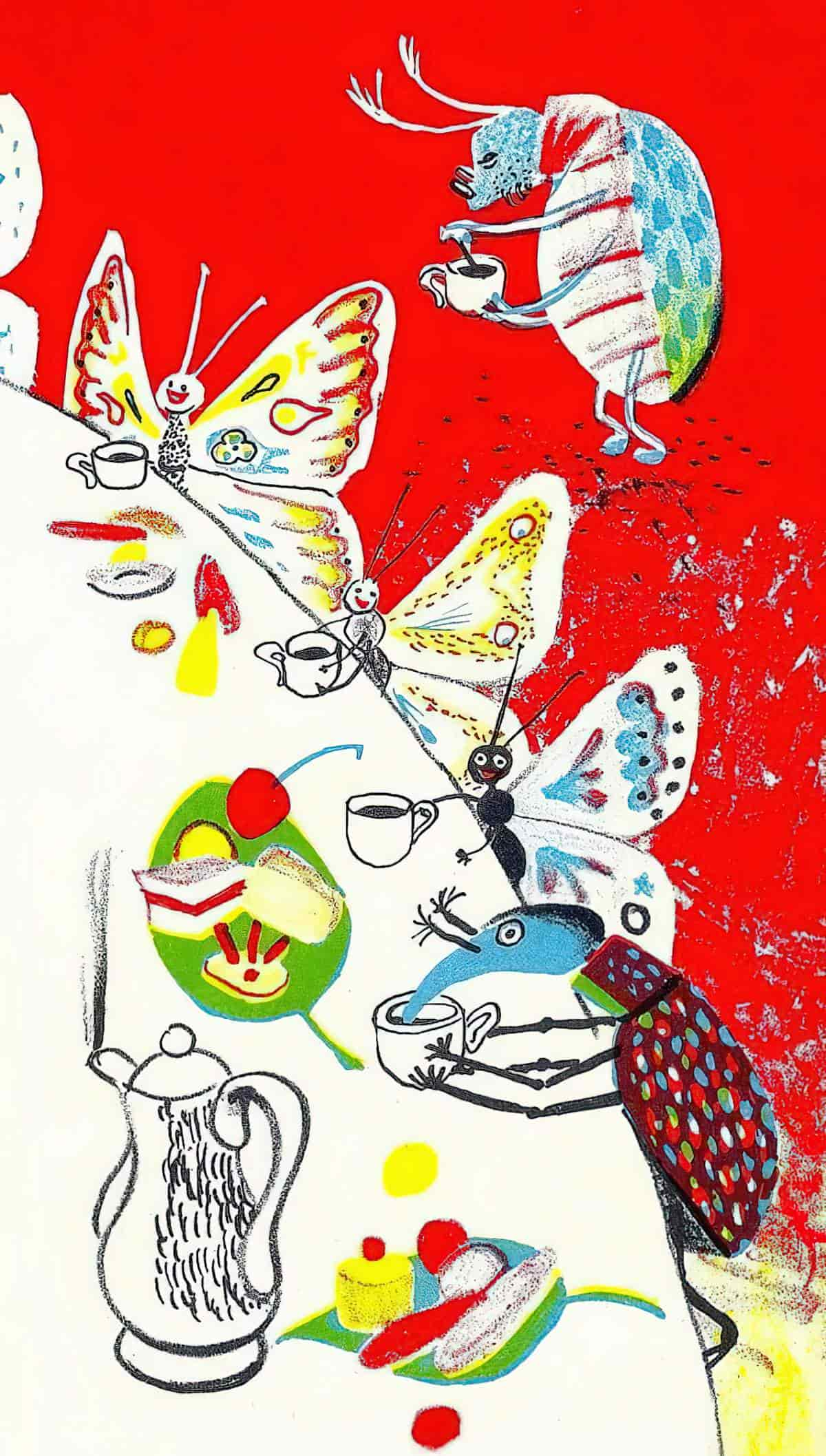
BUTTERFLIES AND FEMININITY
Butterflies are, of course, beautiful to human eyes. Anything beautiful in nature tends to be associated with femininity. Despite the long trips undertaken by, say, monarch butterflies, their main attributes are thought to be delicate, beautiful and always just a little out of reach (for men).
Butterflies (unlike moths) land with their wings closed. This is pretty much how ladies are taught to sit.
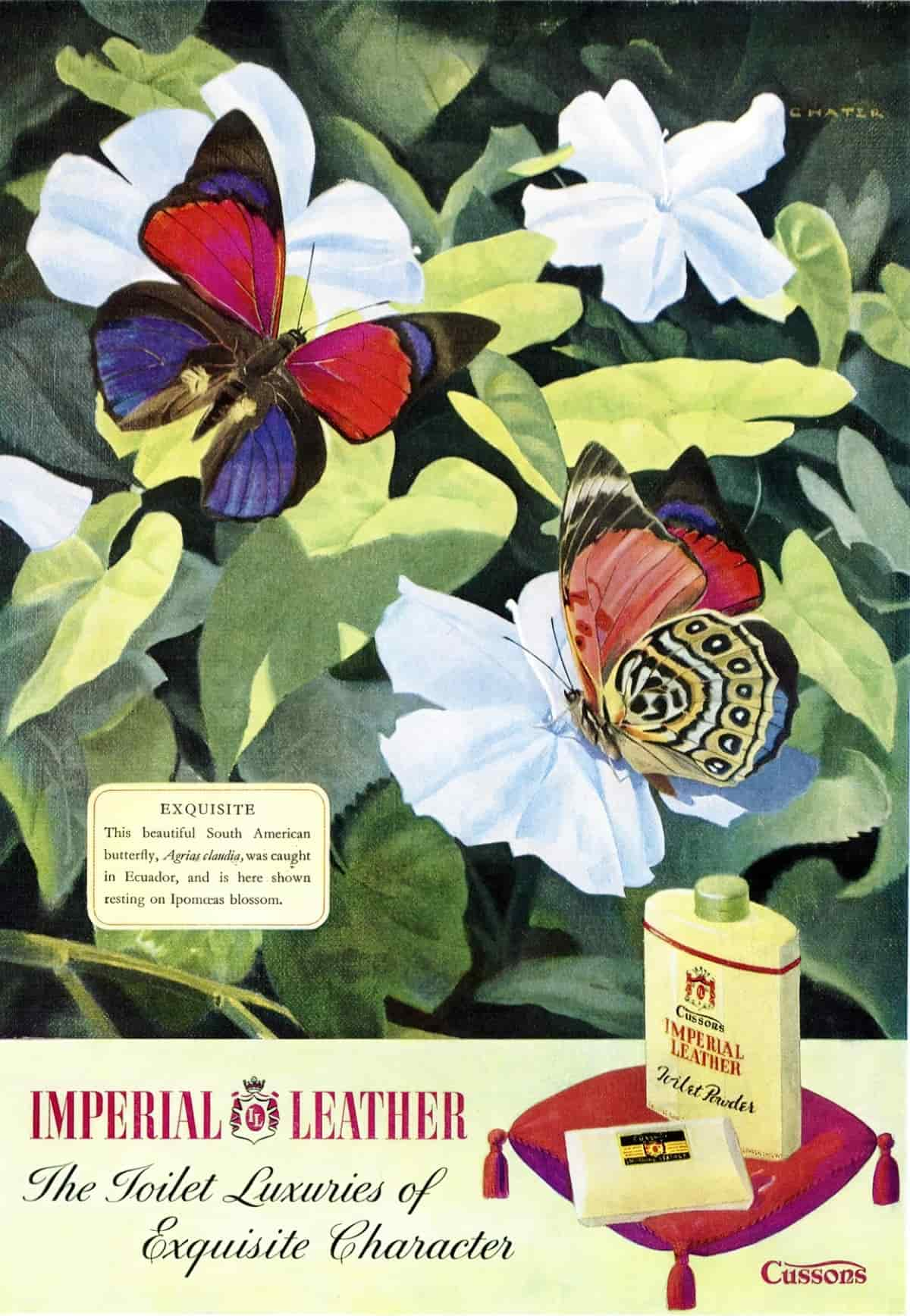
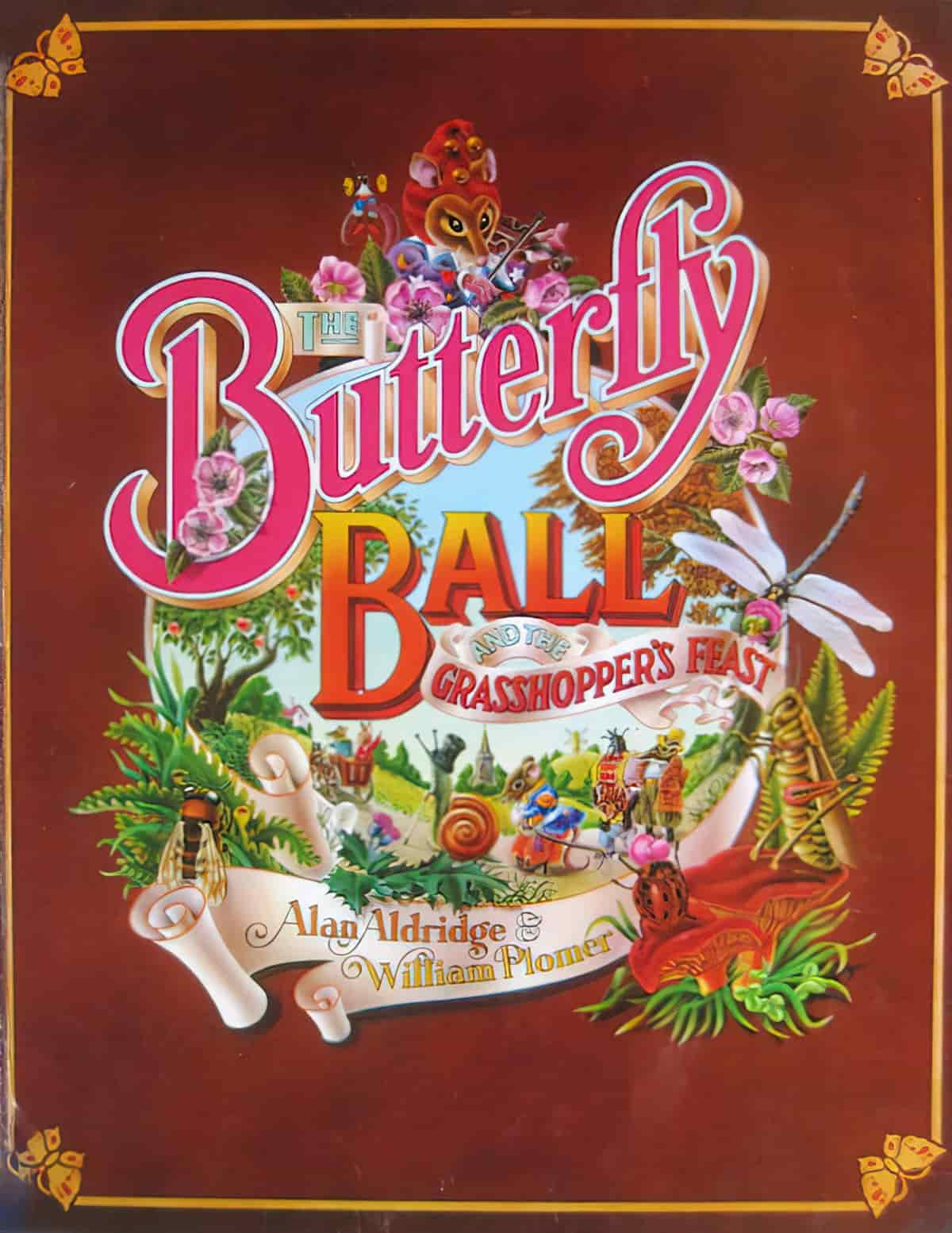
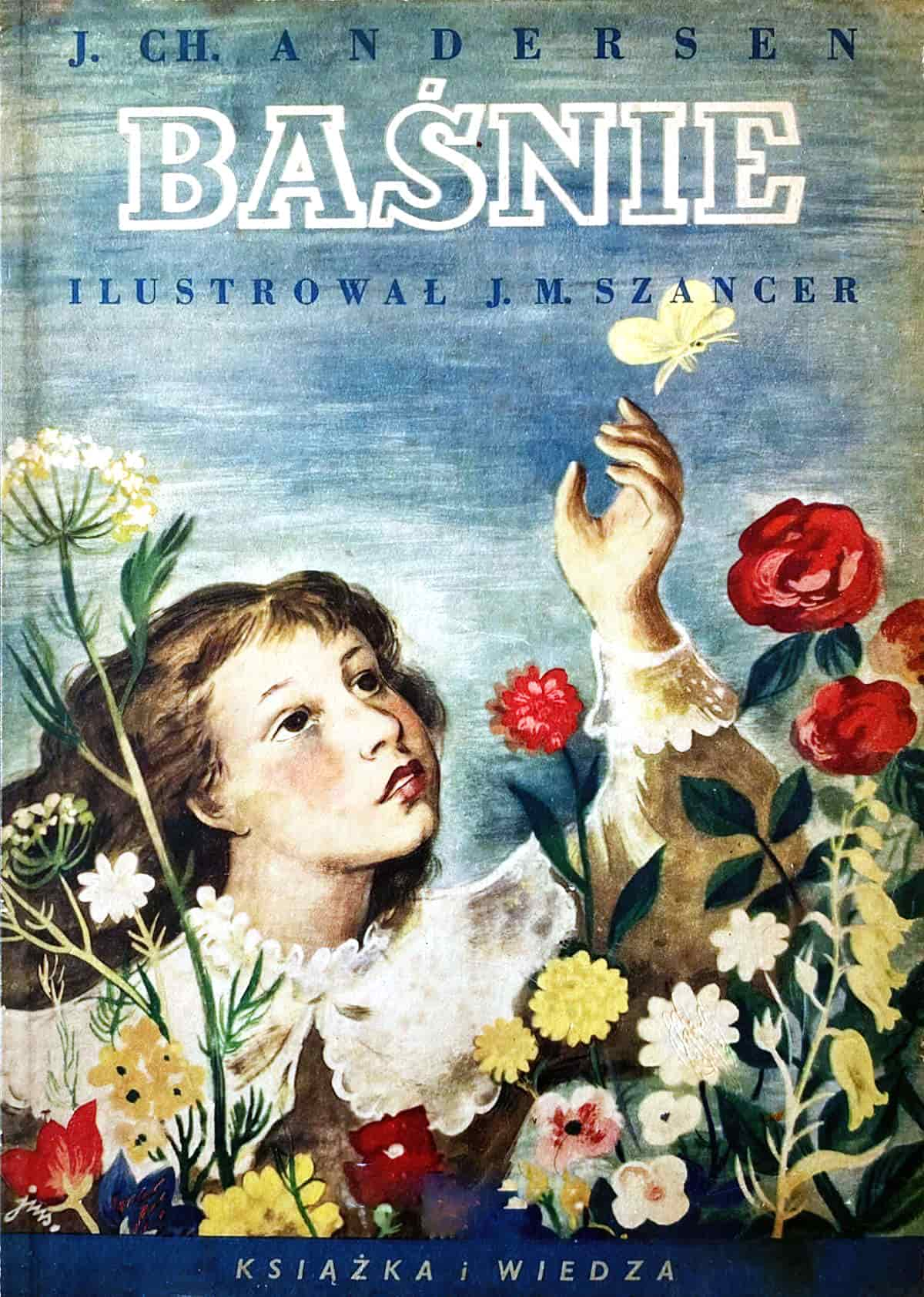
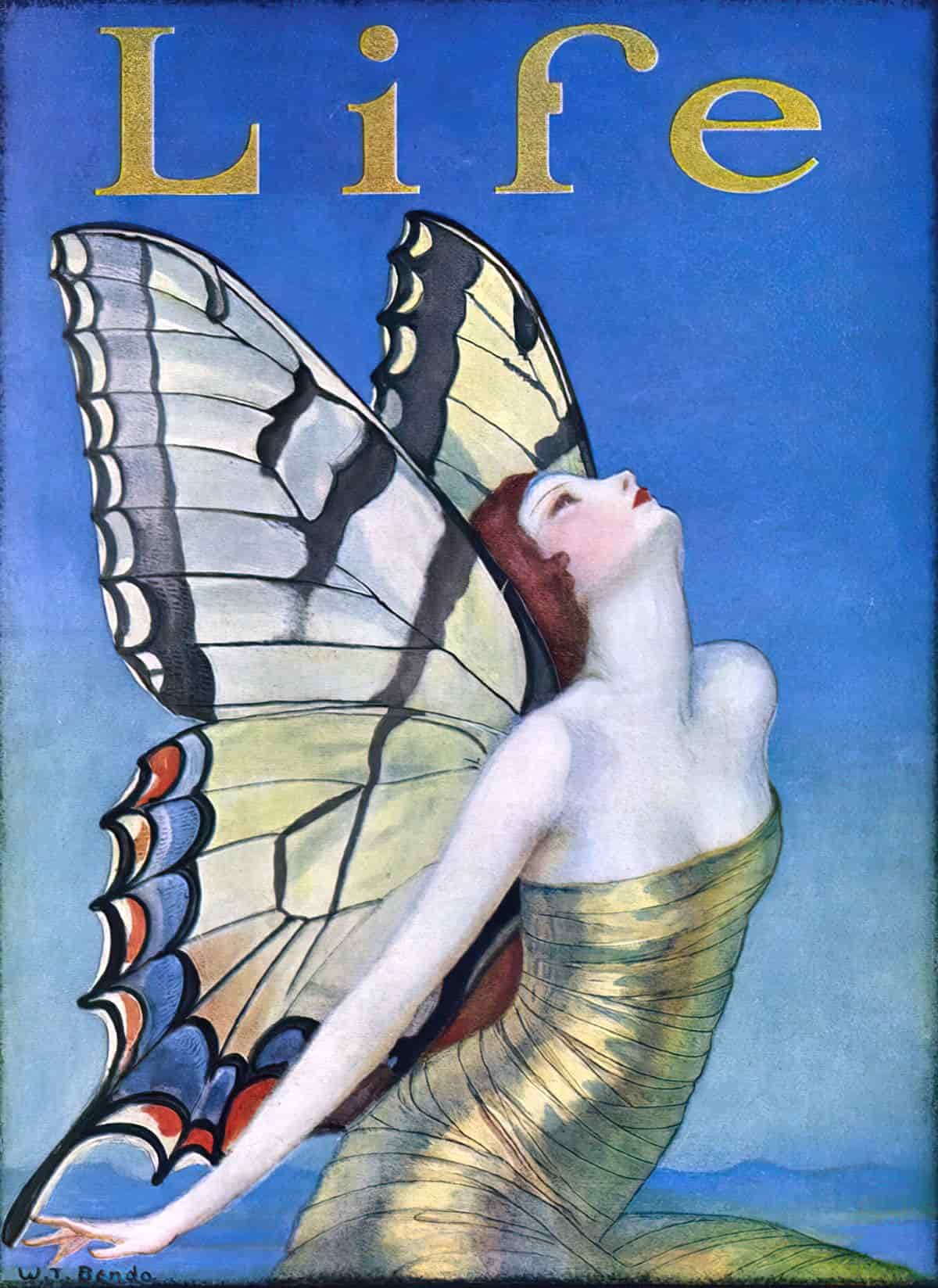
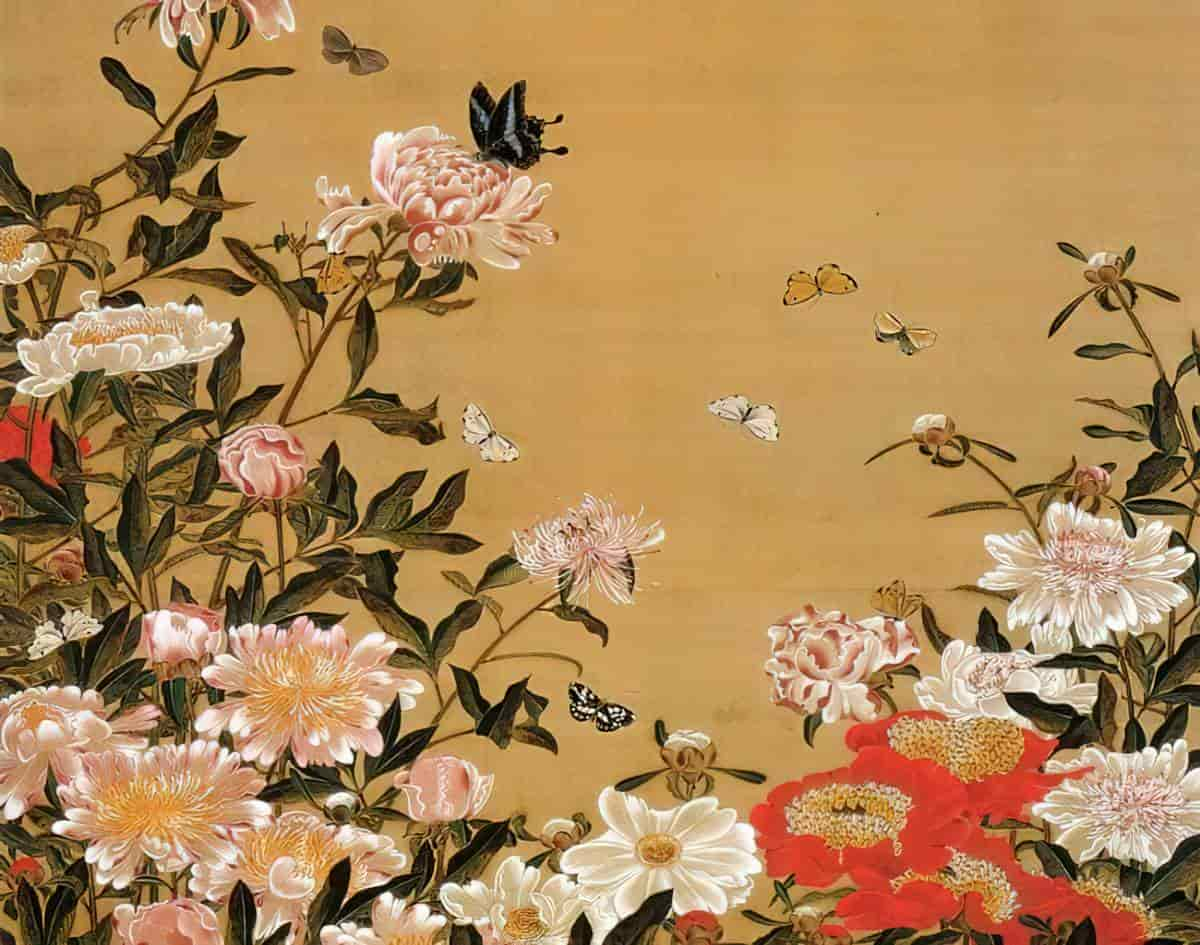
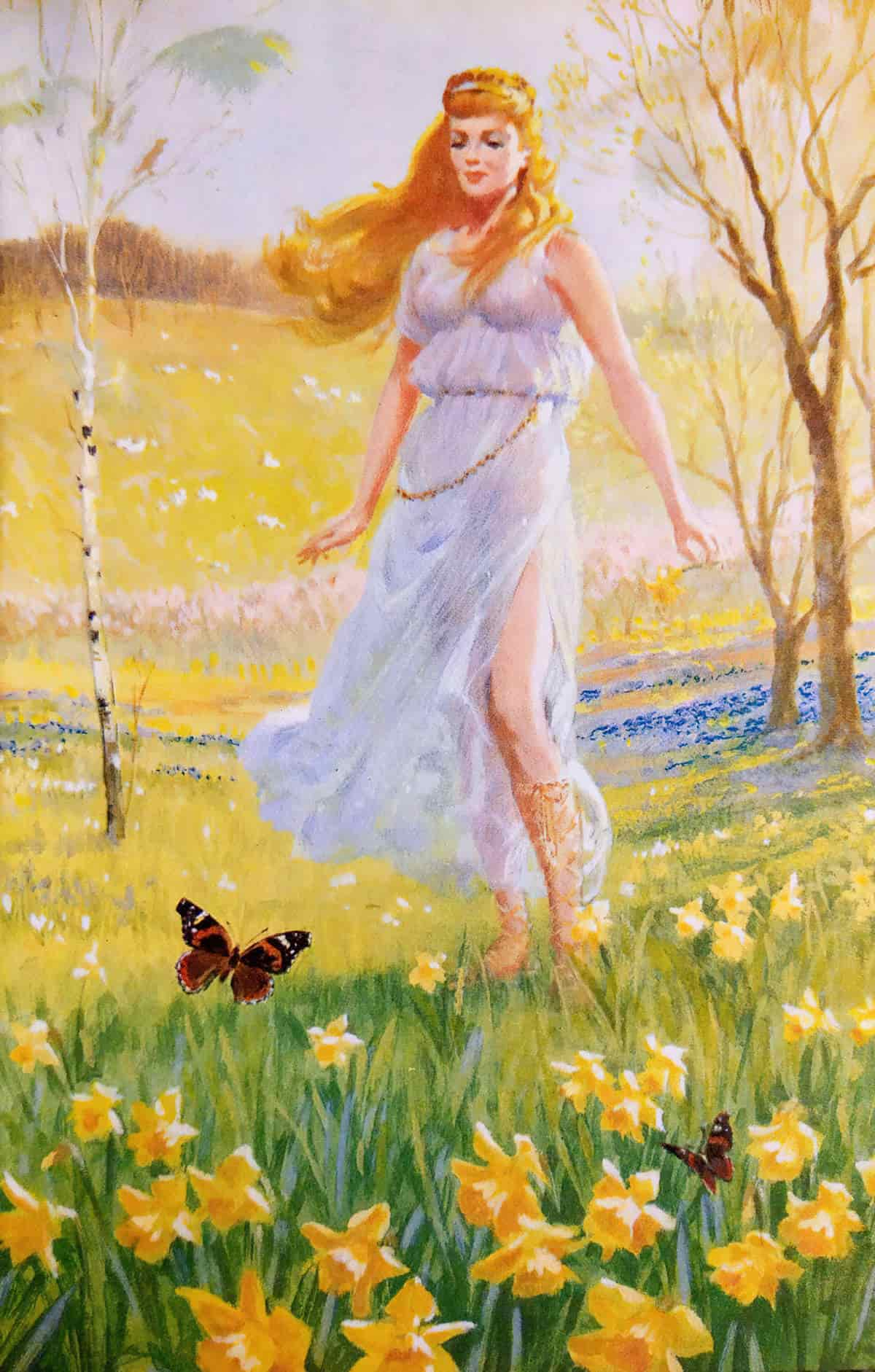
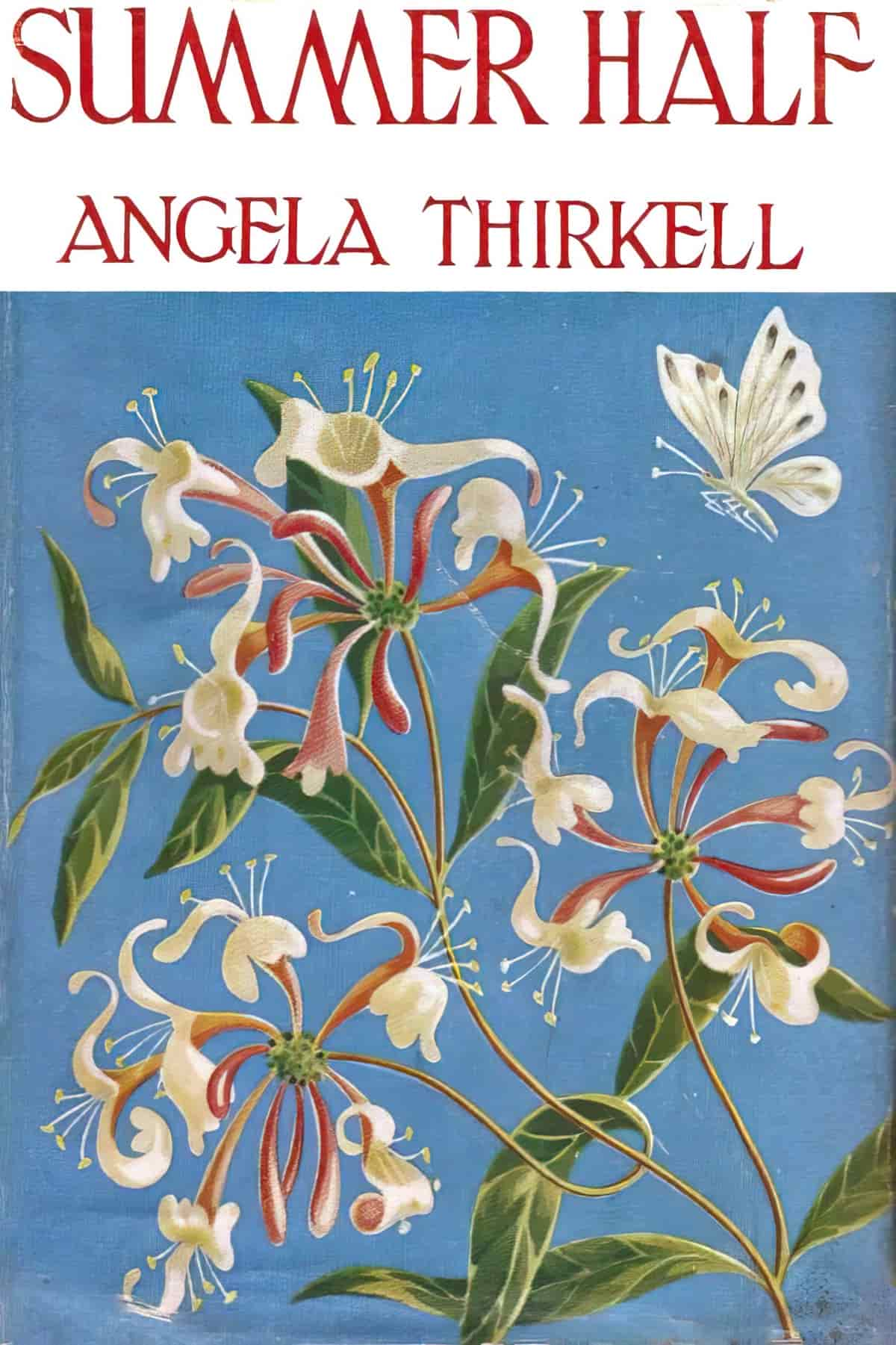
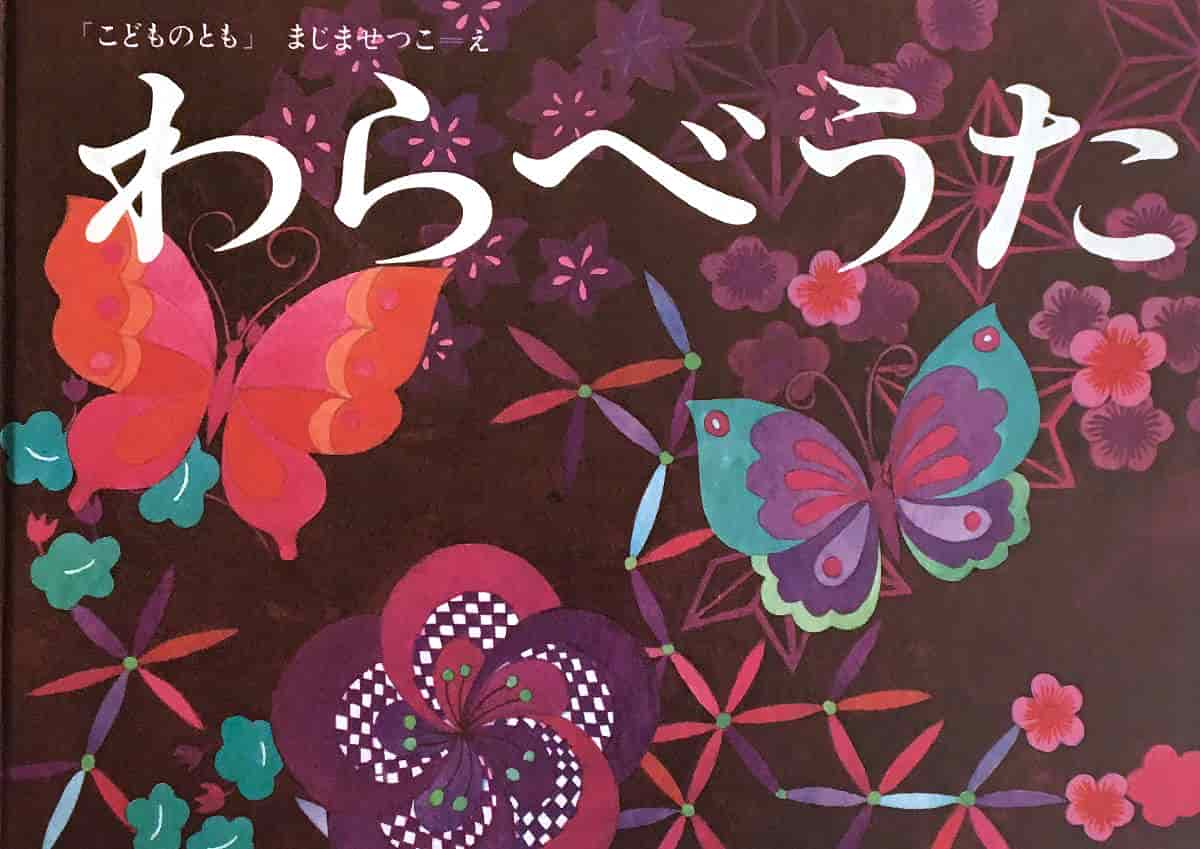
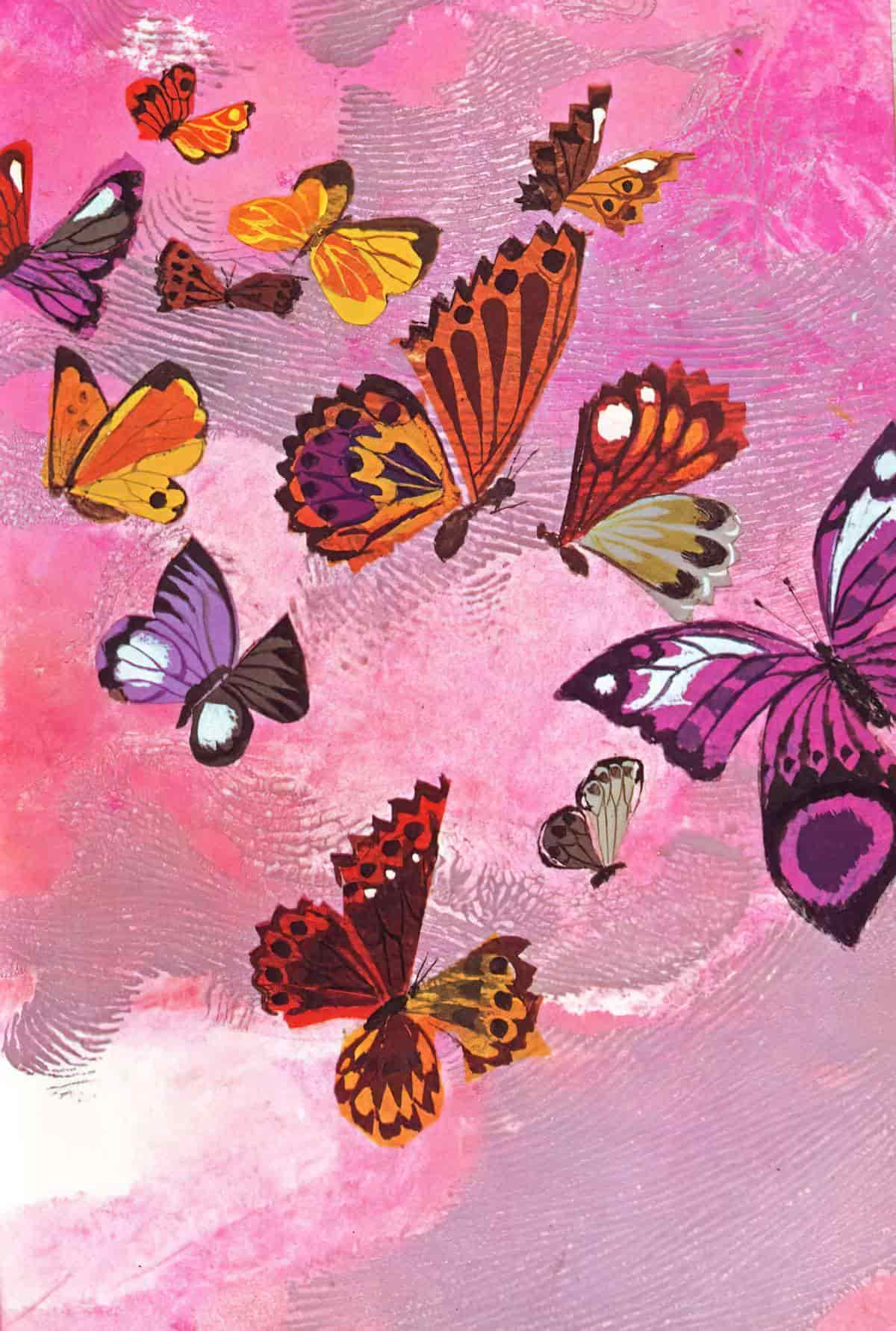
TRANSFORMATION
Butterflies mean a number of different things, but often ‘transformation’ or ‘regeneration’ is the link.
BUTTERFLIES SIGNAL THE ARRIVAL OF SPRING
For many Native American cultures, the first butterflies signal the arrival of spring and acknowledge that the people have survived another difficult winter season. For this reason, the butterflies are seen as good omens and positive beings in life. Butterflies were particularly revered by tribes of the south west. They were considered a miracle of not just transformation but resurrection. Monarch butterflies in particular represent links between humans and nature. They are delicate (like the human psyche) but also hardy enough to undertake epic migrations. So for thousands of years people have looked to butterflies as a reassuring symbol in times of change.
Unfortunately, in the era of climate change, butterflies have turned into a symbol of collapse rather than a symbol of redemption. Monarch butterflies migrating south must now pass through habitats which are largely destroyed by human activity, more than 90% diminished. Even if they make it far enough, they will take shelter in a sanctuary.
In some Native American cultures, the first sighting of a dark winged butterfly would indicate a stormy summer. But if they first butterfly you saw was brightly coloured e.g. yellow, this would indicate a bright, sunny summer.
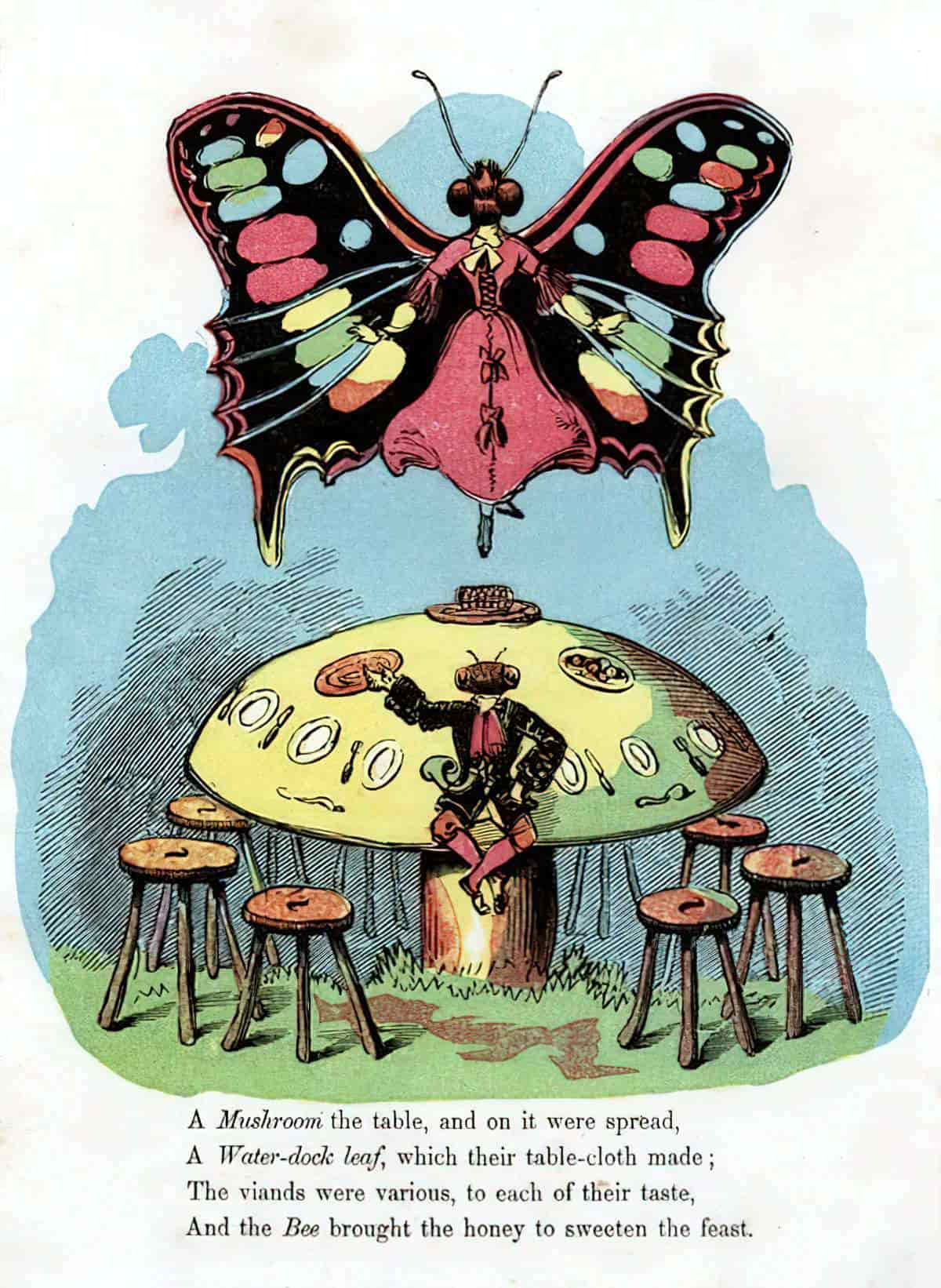
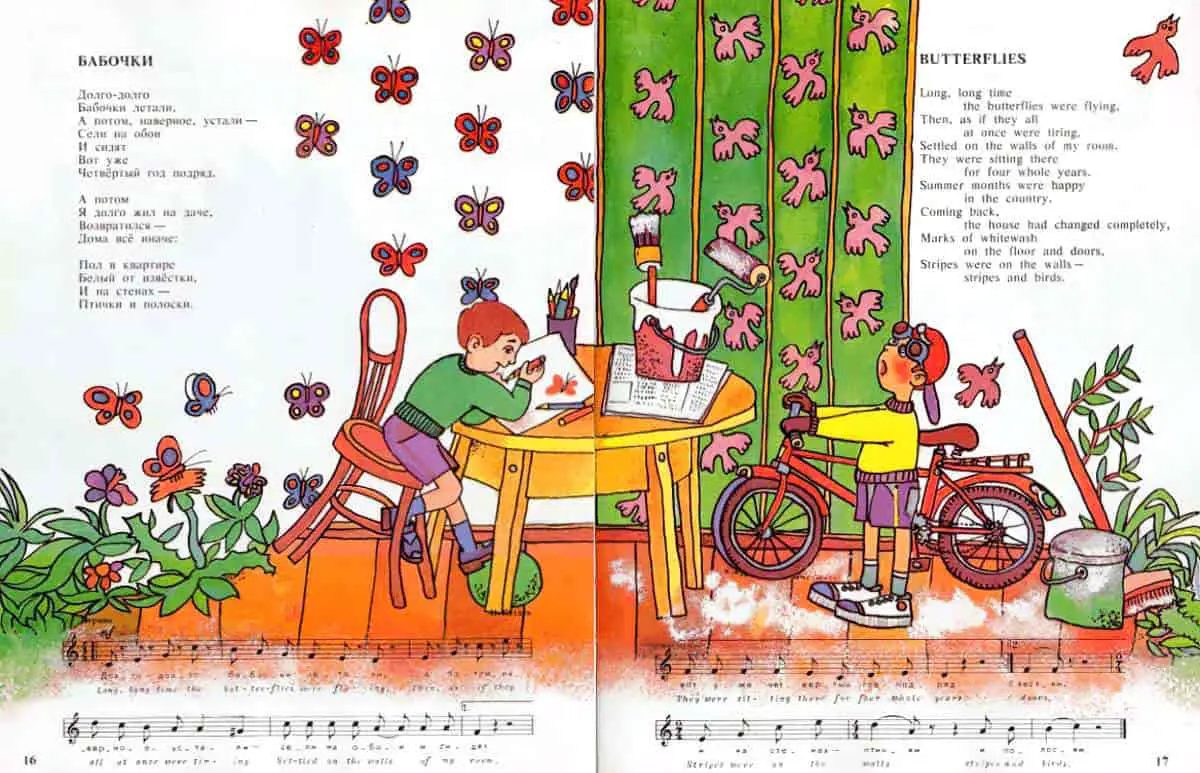
THERE’S MORE TO “THE BUTTERFLY ANALOGY” than most of us realise
The Butterfly Analogy: A caterpillar retreats into its chrysalis, then all by itself regenerates into a beautiful butterfly and goes back out into the world transformed as something wonderful, just before it thinks it’s going to die.
In reality: The butterfly does not simply fly away as soon as it emerges from its chrysalis. It hovers there, waiting for its wings to dry. A butterfly can’t fly with wet wings. So they pump and pump their wings to strengthen their wings. It takes hours.
If it didn’t do this, it would end up on the ground, or picked off by predators.
The lesson: When you’ve been through transformative growth, give yourself time to get used to your new situation.
See: The Tao of Jun podcast, Episode 17 Jan 2019
BUTTERFLIES AS TRANSITION BETWEEN LIFE AND DEATH
In many cultures, butterflies symbolise the human soul.
In both Ireland and Germany, butterflies are thought to be the souls of children. In Ireland it is considered bad luck to kill white butterflies.
Ancient Egyptians used butterfly imagery in tomb paintings.
In Greece, Aristotle gave butterflies the name Psyche, the Greek word for soul. The goddess Psyche is frequently depicted in art with butterfly wings.
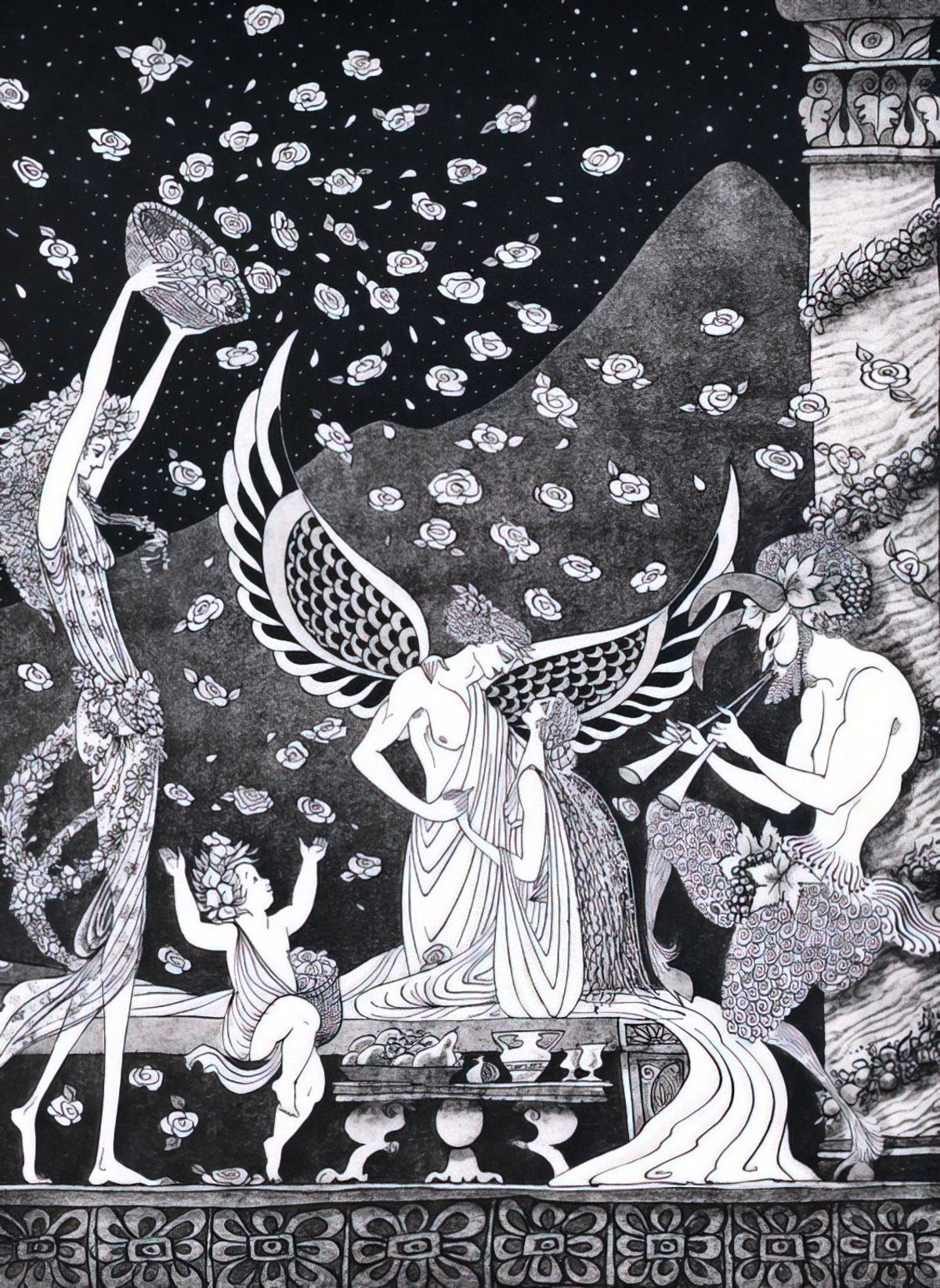
In Aztec culture, butterflies were thought to be the beloved dead returning to Earth to reassure relatives that they were happy in the afterlife after transitioning well.
Likewise, in Mexico, Monarch butterflies turn out around the time of the Festival of the Dead (Die de Muertes) and are believed to be souls of the returning dead.
In Spain, people who have lost loved ones throw wine over the ashes of the dead. This is to attract butterflies. Butterflies help souls transition between the realm of the living and the realm of the dead.
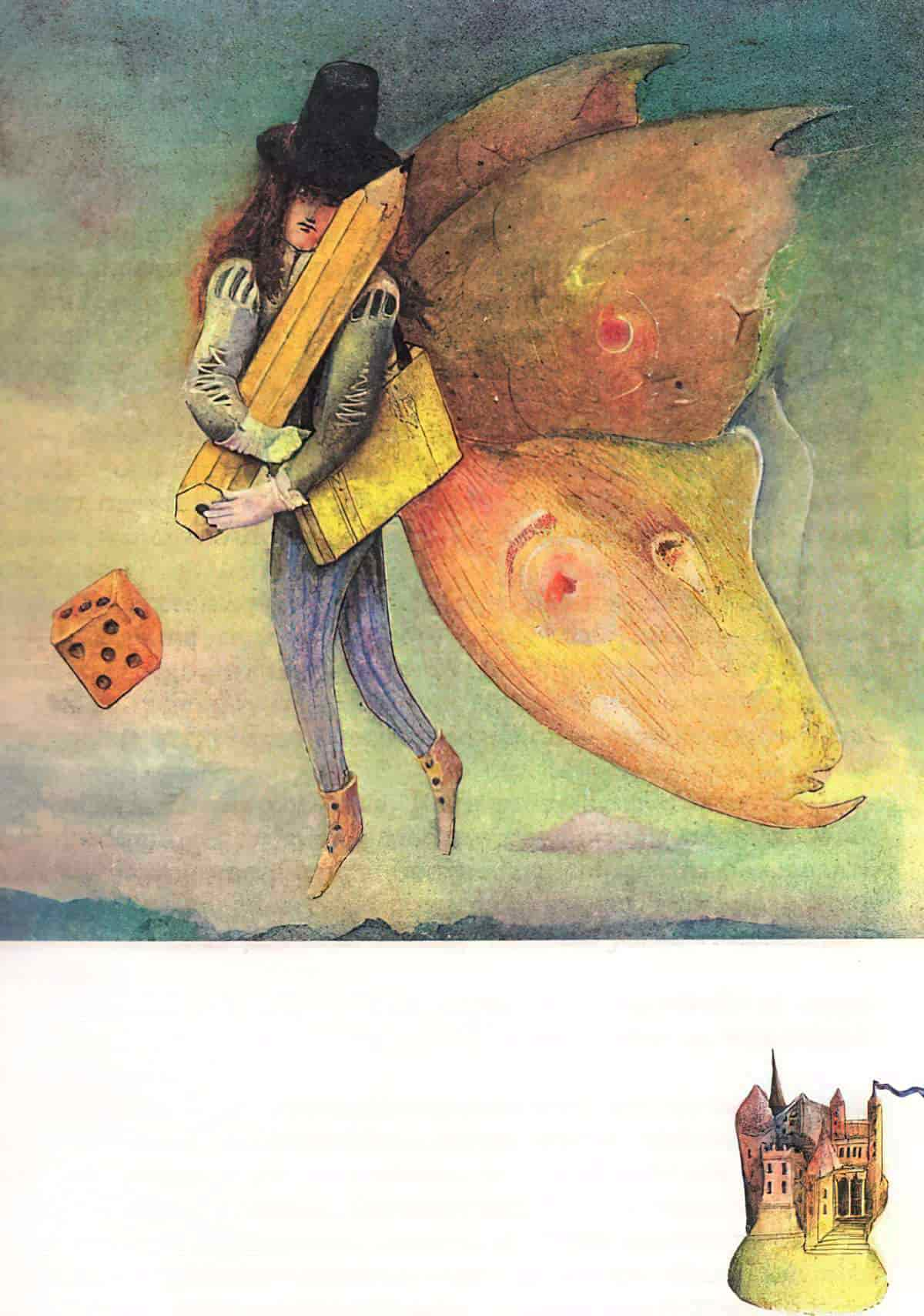
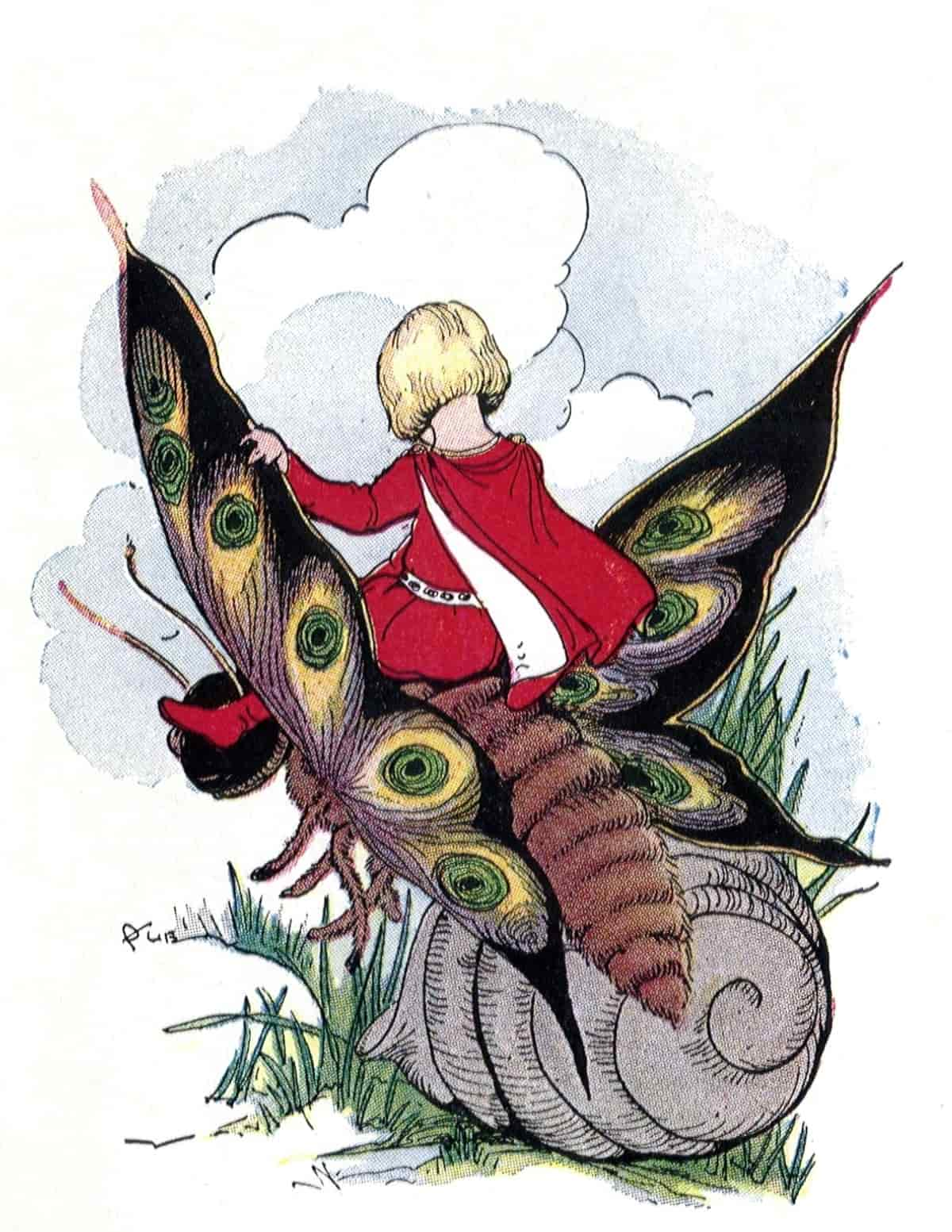
BUTTERFLIES AS CONNECTION
Migratory butterflies don’t migrate the way humans do, owing to a variety of push and pull factors, wreaking havoc wherever we end up.
No, butterflies are an integral part of the environment. Their behaviours are necessary to the natural world as we know it.
BUTTERFLIES AND SUPERNATURAL CREATURES
BUTTERFLIES AS WITCHES
In Russia the word for butterfly is babochka (бабочка). This is the diminutive form of baba, which means old woman (Cf. Baba Yaga). Some Russian folklore says that butterflies are witches in disguise.
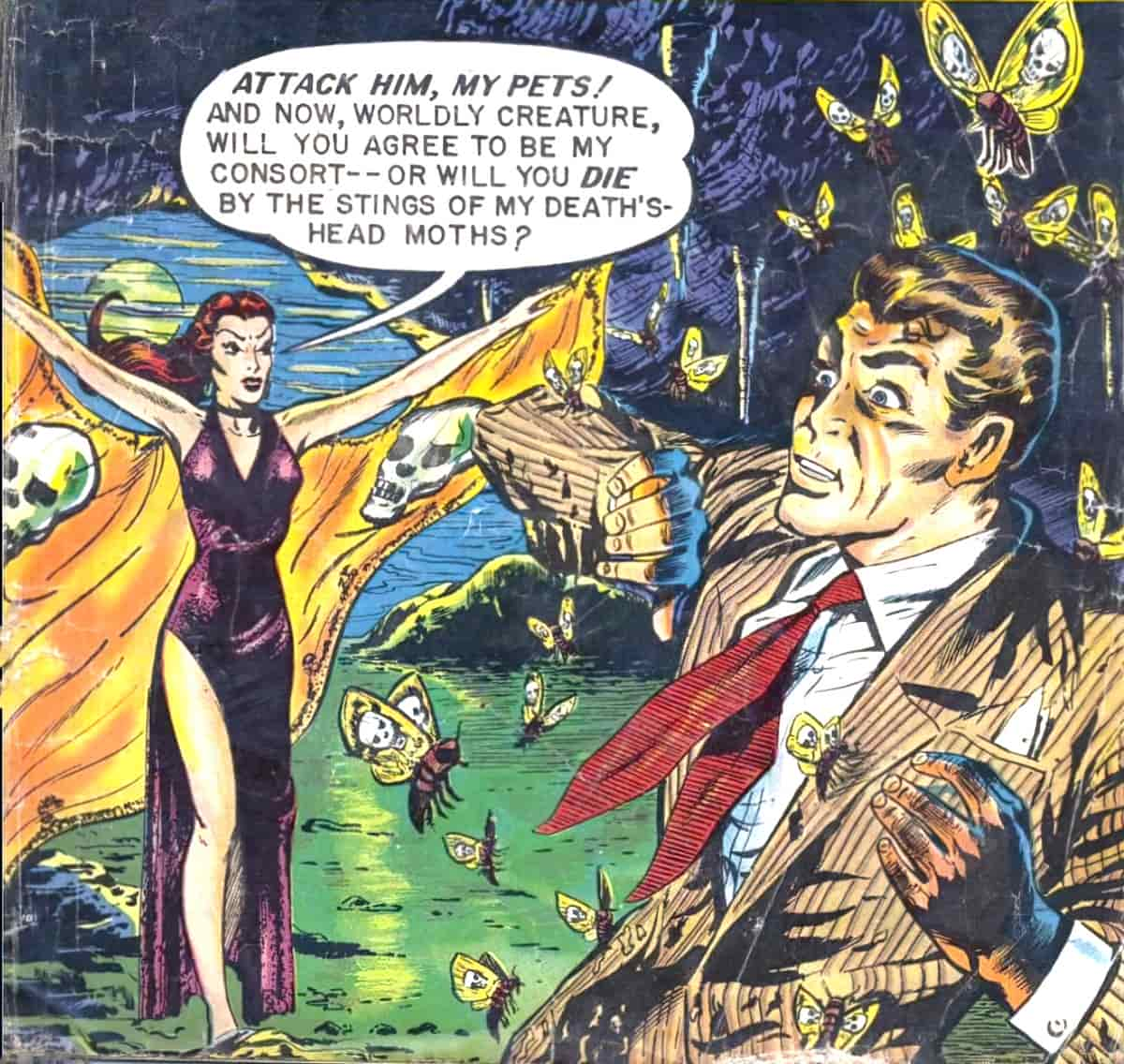
BUTTERFLIES AS FAIRIES
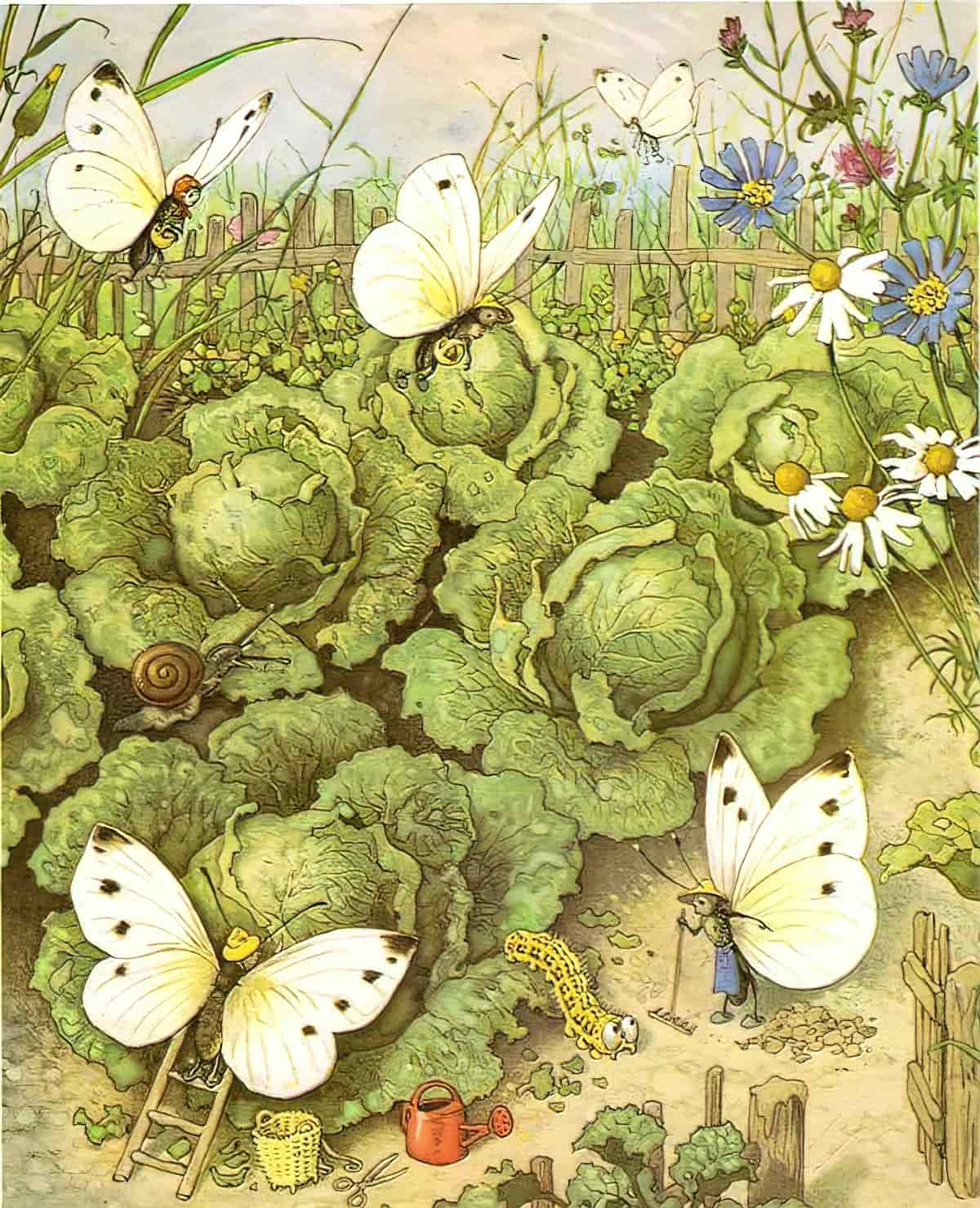
Fairies and butterflies go hand in hand. Modern conceptions of fairies are very similar to butterflies — their size, the way they fly in the air in popular animations are more reminiscent of the butterfly than to any other real world creature I can think of.
The painting below is from the Victorian era. Modern audiences aren’t familiar with it, but Victorian readers were. It once appeared in pretty much every fairy book. The headband of butterflies links them with permanently with fairies in the public imagination.
The painting usually went unattributed and sometimes incorrectly titled, ‘Take the Fair Face of Woman, and Gently Suspending, With Butterflies, Flowers, and Jewels Attending, Thus Your Fairy is Made of Most Beautiful Things’. These lines were apparently taken from a poem by Charles Ede.
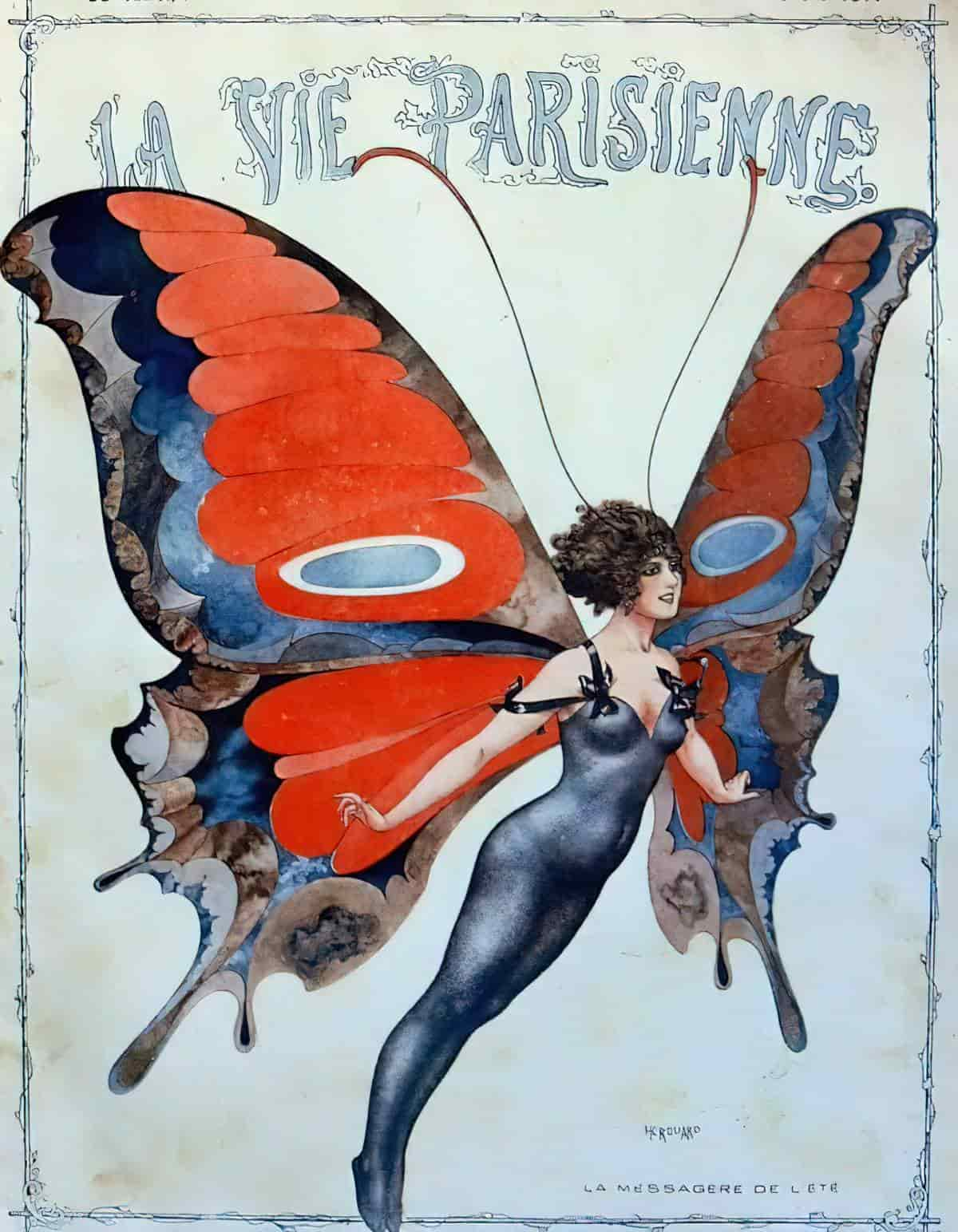
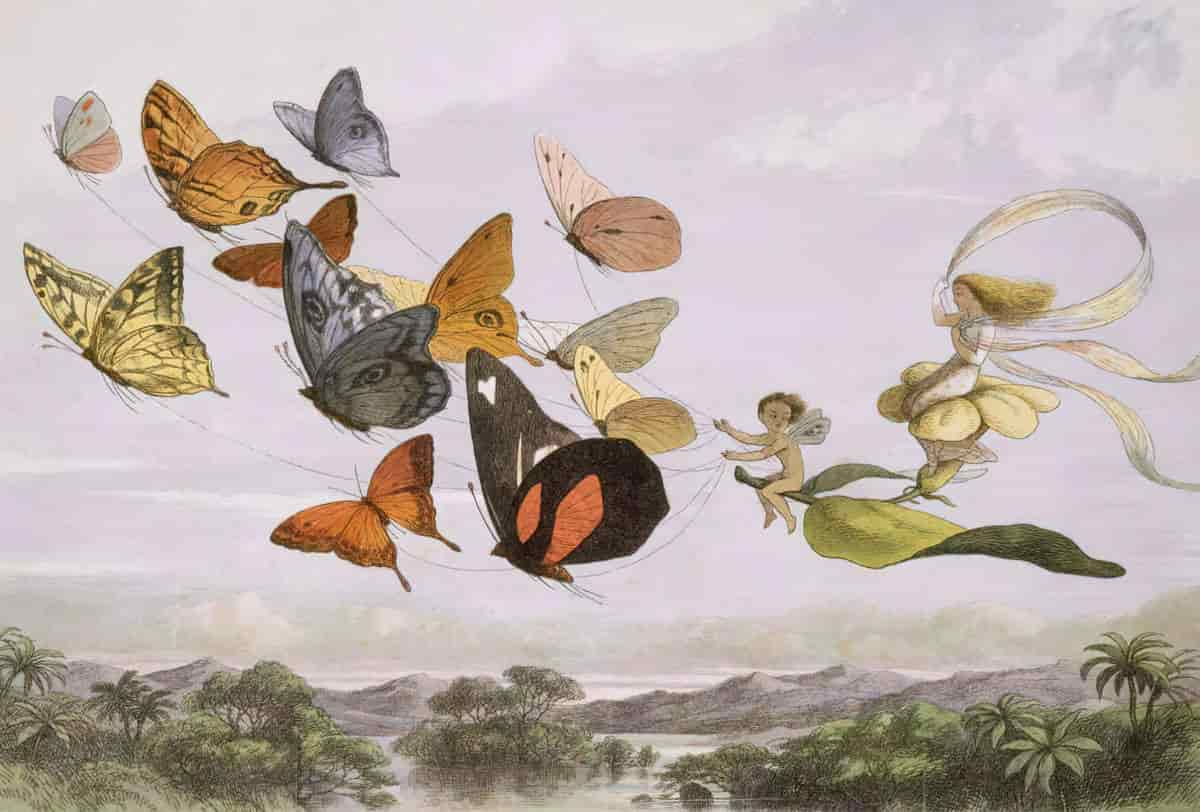
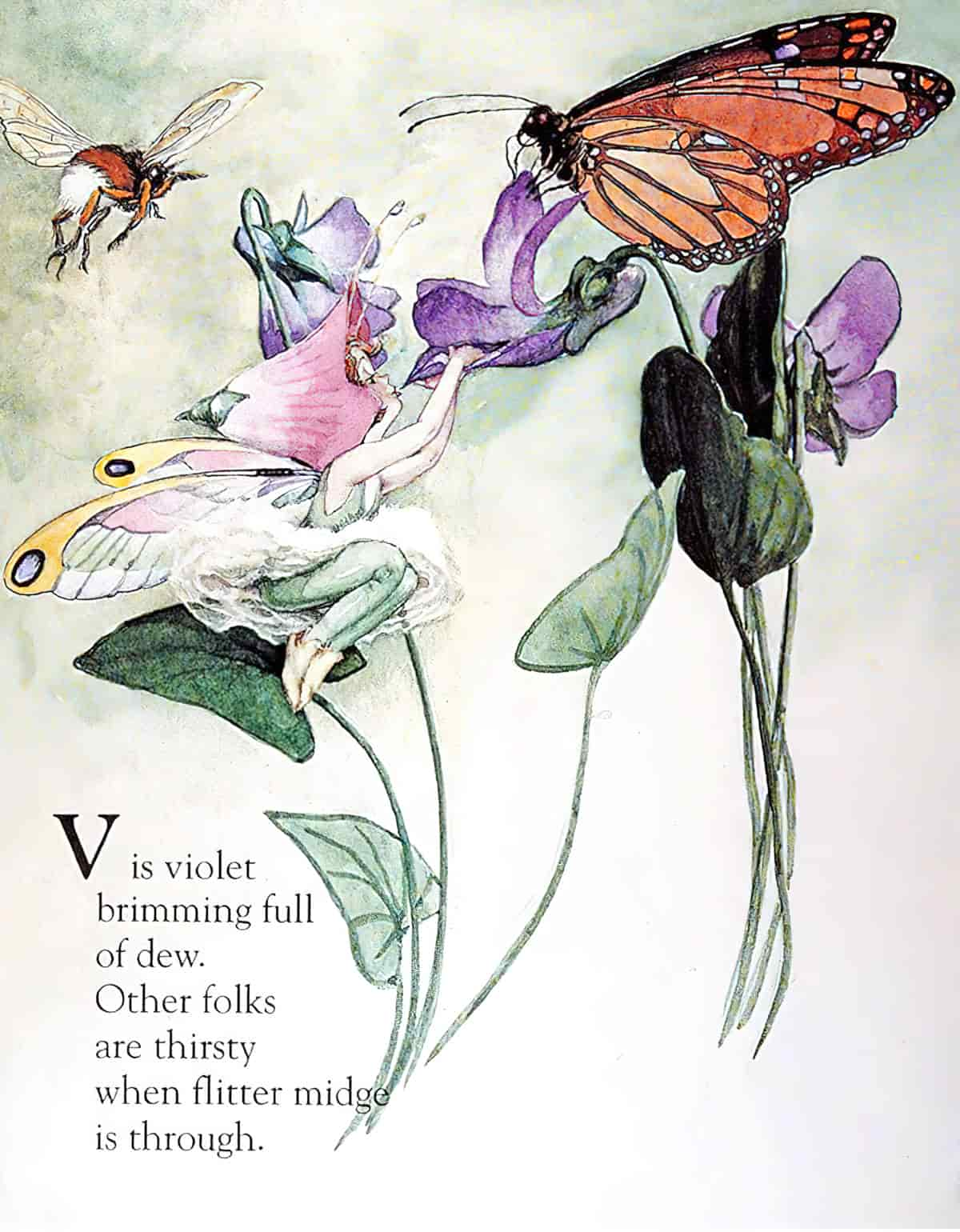
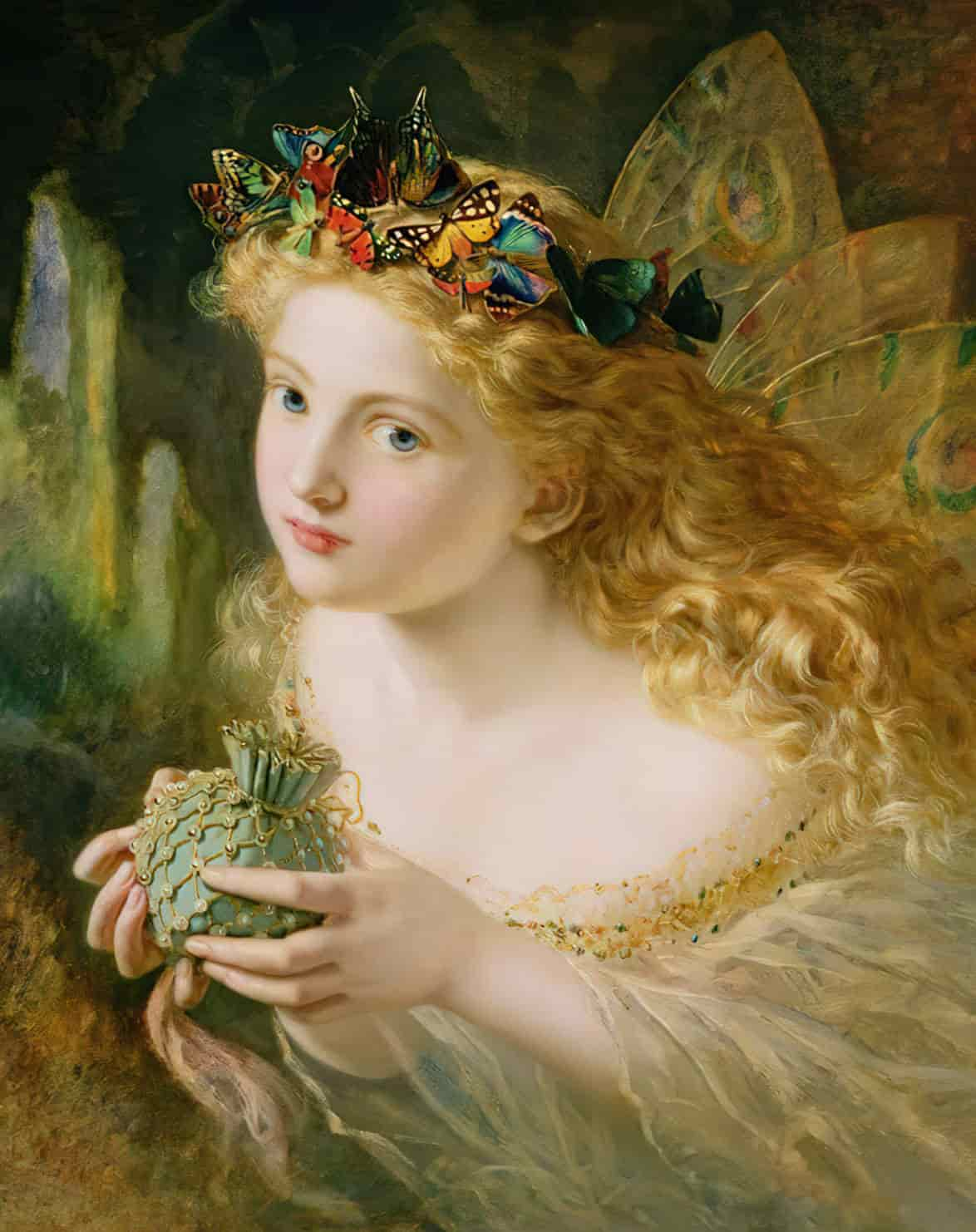
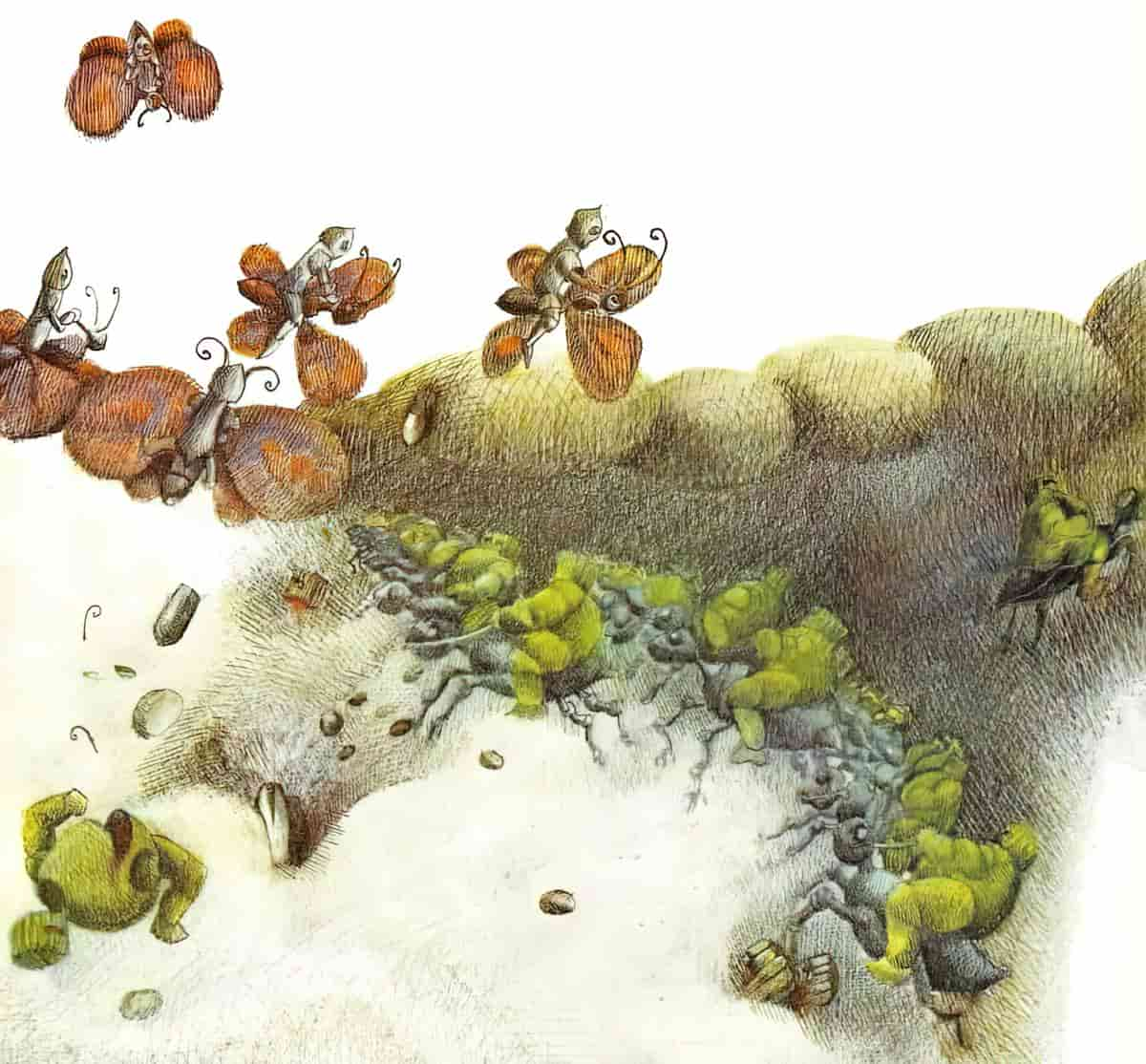
BUTTERFLIES AND THE FLEETING NATURE OF TIME
Butterflies don’t live very long once they’ve transitioned. Their time on earth as beautiful winged creatures is temporary, ephemeral, transient and fleeting.
(In biology, ephemeral refers to flowers, insects and disease which exist for only one day. Technically, butterflies are not ephemeral because they live up to two weeks. Even the coppers and small blue butterflies live in their adult state for for a few days.)
Anything which is fleeting is considered ethereal, meaning it pertains to the (hypothetical) immaterial realm. It’s not really here. Butterflies get the ethereal treatment in the collective imagination because they are exceedingly light and airy, tenuous and characterized by extreme delicacy. Their survival, even for a day, is tenuous.
B.F.: I’d like to ask you about each of these Irish writers, but that would take us too long.
V.S.P.: One thing that always struck me, if I may say so, about Liam O’Flaherty was a story of his in which — it’s a summery day and it’s by the sea and a butterfly’s flying over the land, flying out to sea, and there it is going across the English Channel and you can see it for a long time and eventually it will disappear. Where does it disappear, does it cross the sea, does it fall down into the sea or what? The observer on the scene identifies himself as it were with the butterfly going across the sea. Of course it is a very slight idea but it’s a very curious one, and a real one.
B.F.: What’s the title of that story?
V.S.P.: I’ve forgotten. I think it appears in a book The Tent.
Journal of the Short Story In English, Autumn 2003, interview with V.S. Pritchett (He’s talking about “The Foolish Butterfly“.
Autumn. Somewhere over Michigan, a colony of monarch butterflies, numbering more than fifteen thousand, are beginning their yearly migration south. In the span of two months, from September to November, they will move, one wing beat at a time, from southern Canada and the United States to portions of central Mexico, where they will spend the winter.
They perch among us, on windowsills and chain-link fences, clotheslines still blurred from the just-hung weight of clothes, windowsills, the hood of a faded-blue Chevy, their wings folding slowly, as if being put away, before snapping once, into flight.
It only takes a single night of frost to kill off a generation. To live, then, is a matter of time, of timing.
from On Earth We’re Briefly Gorgeous, a 2021 novel by Ocean Vuong
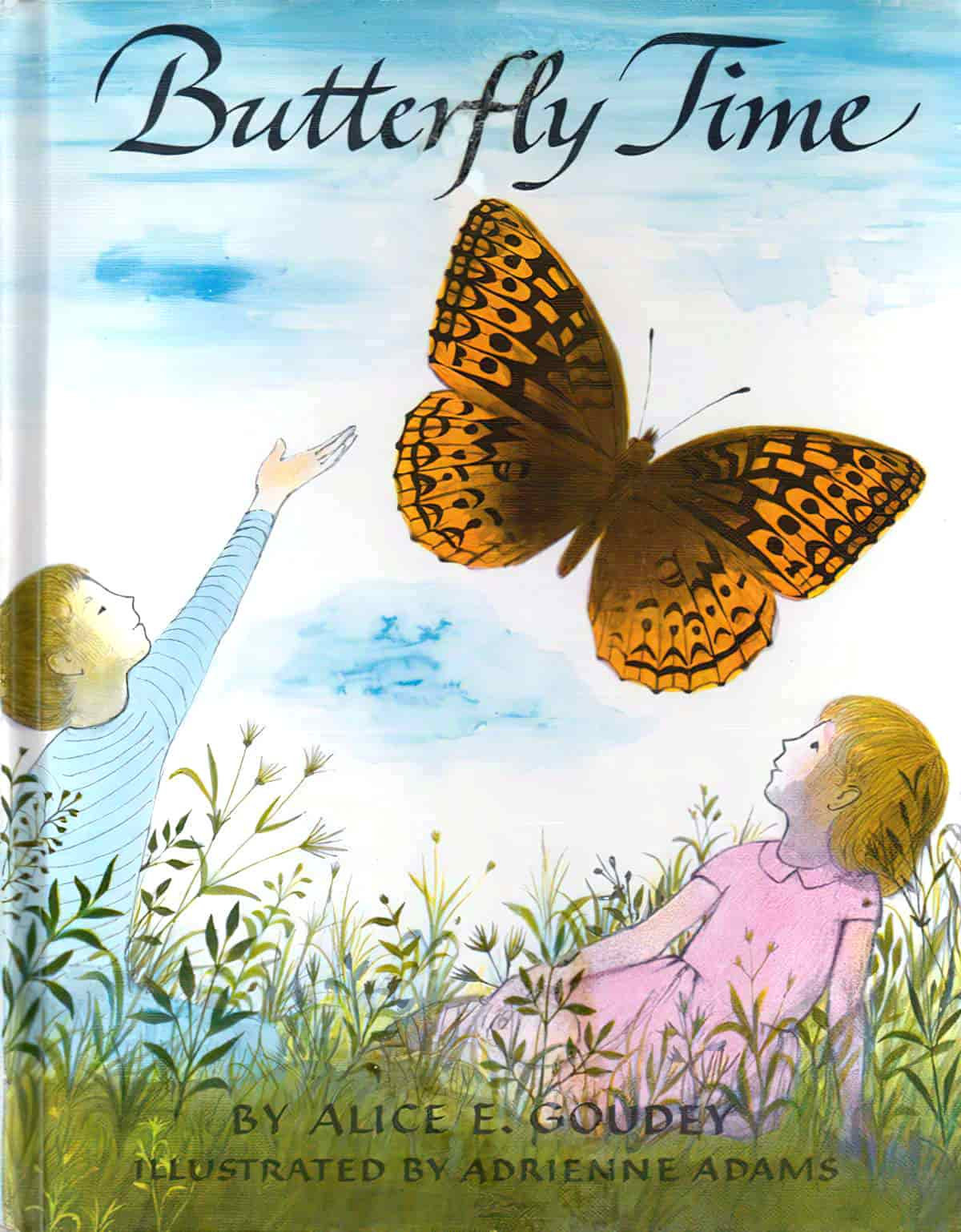
In this episode of Talk Nerdy, Cara is joined by Dr. Nick Haddad, Senior Terrestrial Ecologist in the Department of Integrative Biology at Michigan State University and Kellogg Biological Station. They discuss his newest book, “The Last Butterflies: A Scientist’s Quest to Save a Rare and Vanishing Creature.”
BUTTERFLIES AS MESSENGER TO GOD
Native American tribes have various beliefs around butterflies, e.g. that butterflies carry wishes and prayers to the Great Spirit. To do this, catch a butterfly without harming it and then whisper your secrets to it. A wish given to a butterfly is always granted. Also, your wish is safe with butterflies since they can’t speak. (Only the Great Spirit can understand what it holds inside.) In exchange, you must set the butterfly free, though.
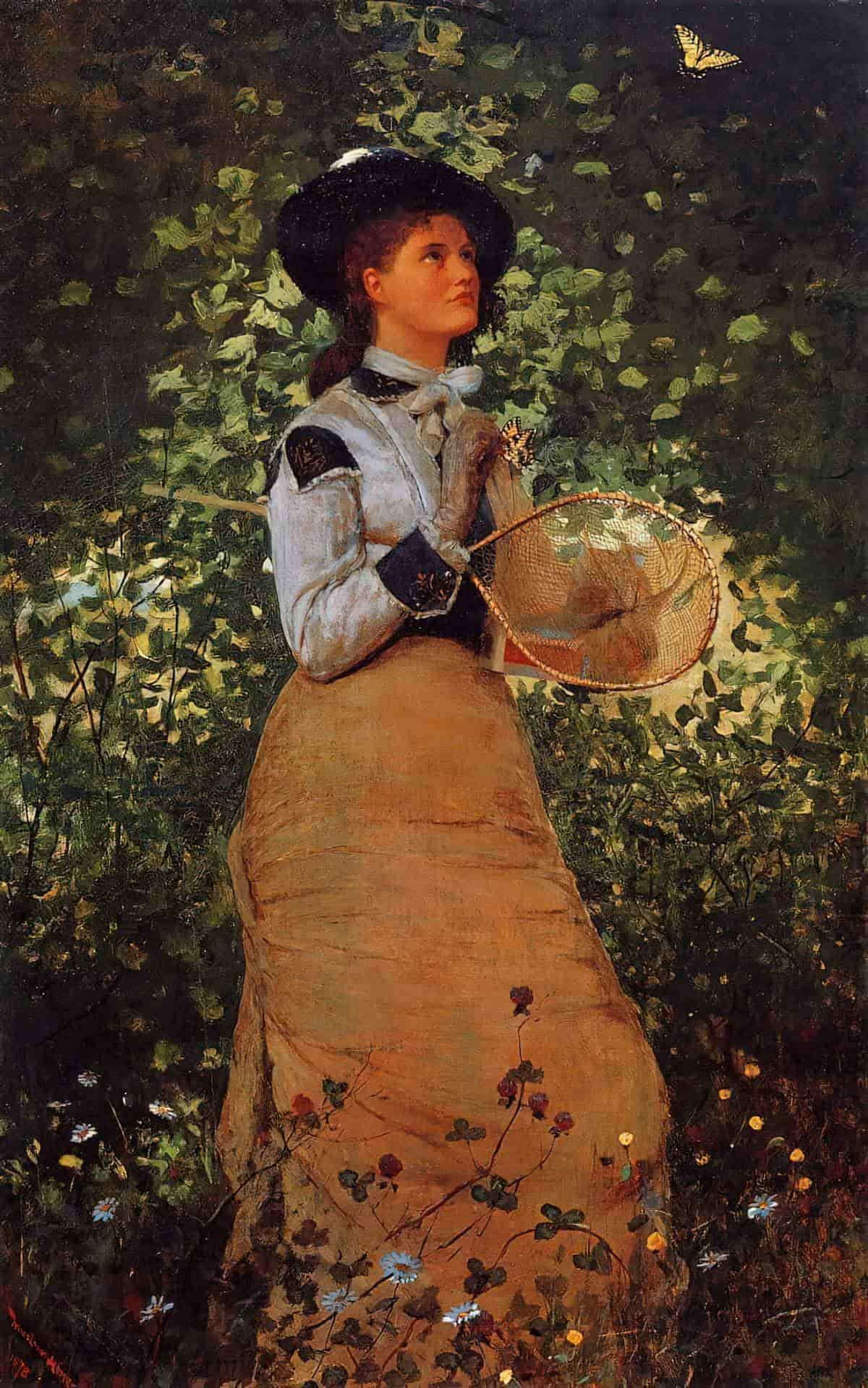
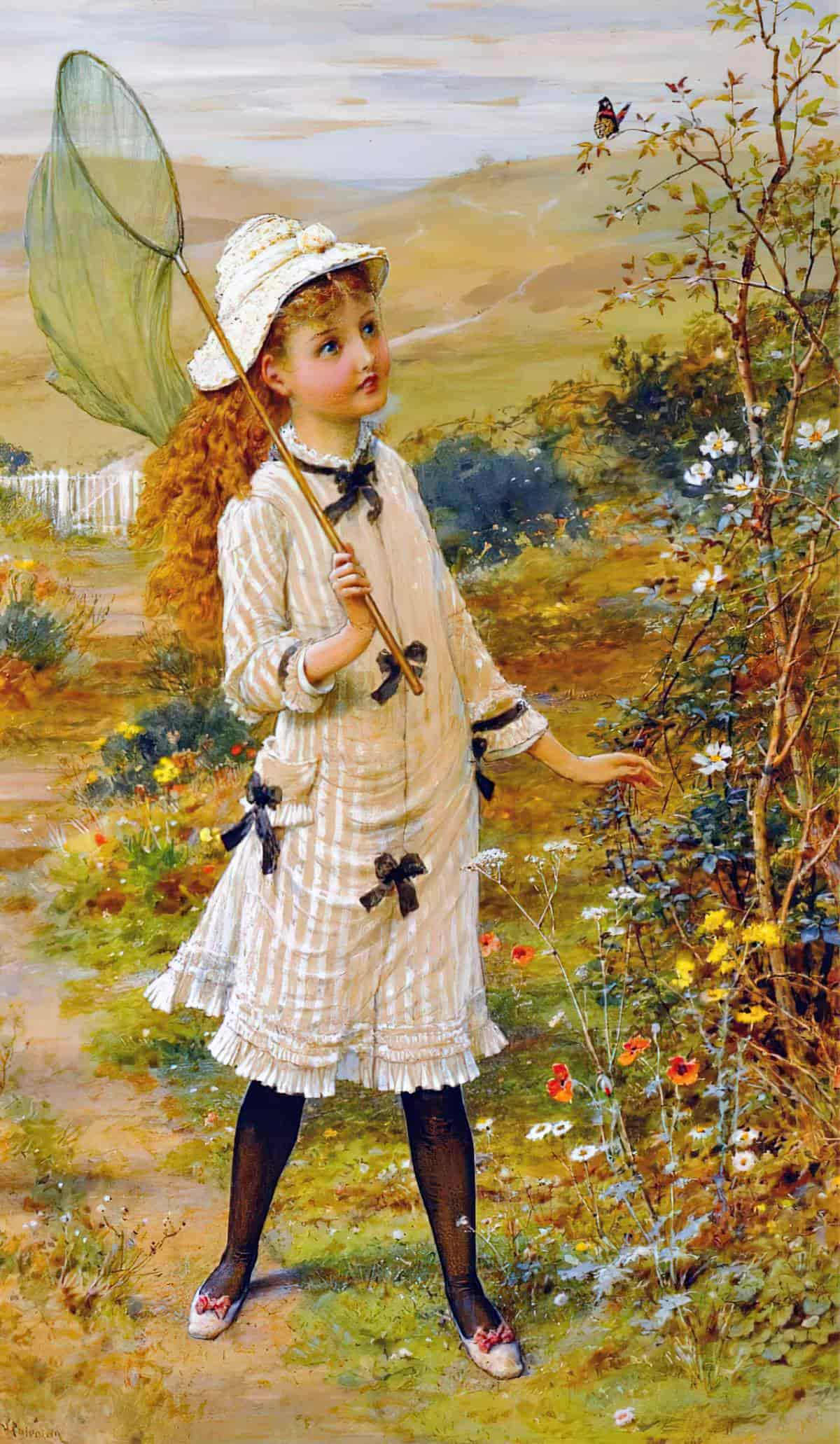
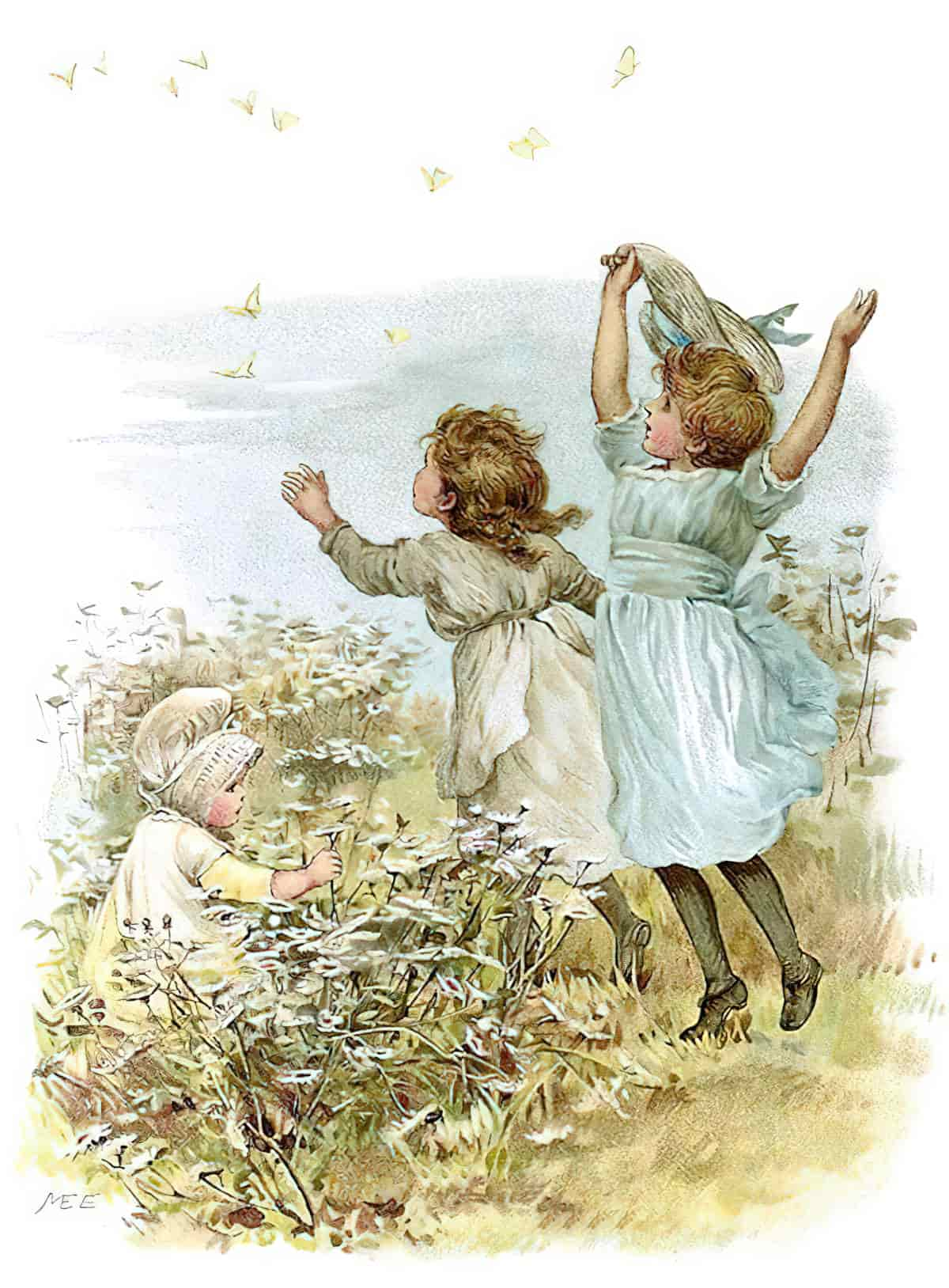
The Little House On The Prairie series didn’t do much for Native American people, but it would seem Laura learned from Native Americans, or simply from living close to nature and in precarity, to care for nature.
[Laura] never tried to catch a butterfly. She knew that its wings were covered with feathers too tiny to see. A touch would brush off those tiny feathers and hurt the butterfly.
On The Banks of Plum Creek, Laura Ingalls Wilder
BUTTERFLIES: GOOD; MOTHS: BAD
In her autobiography, Dolly [Parton] shared that she has loved butterflies since she was a young child. ‘I used to get lost in the woods, chasing them. I was not afraid of them because they were so gentle,’ she says. ‘I knew they weren’t going to bite me or sting me. They were beautiful and colorful, and they were doing something, being productive and being harmless.’
Inside Dolly Parton’s home – a tranquil Tennessee retreat for a country icon
Moths and butterflies belong to the same insect family, the Lepidoptera.
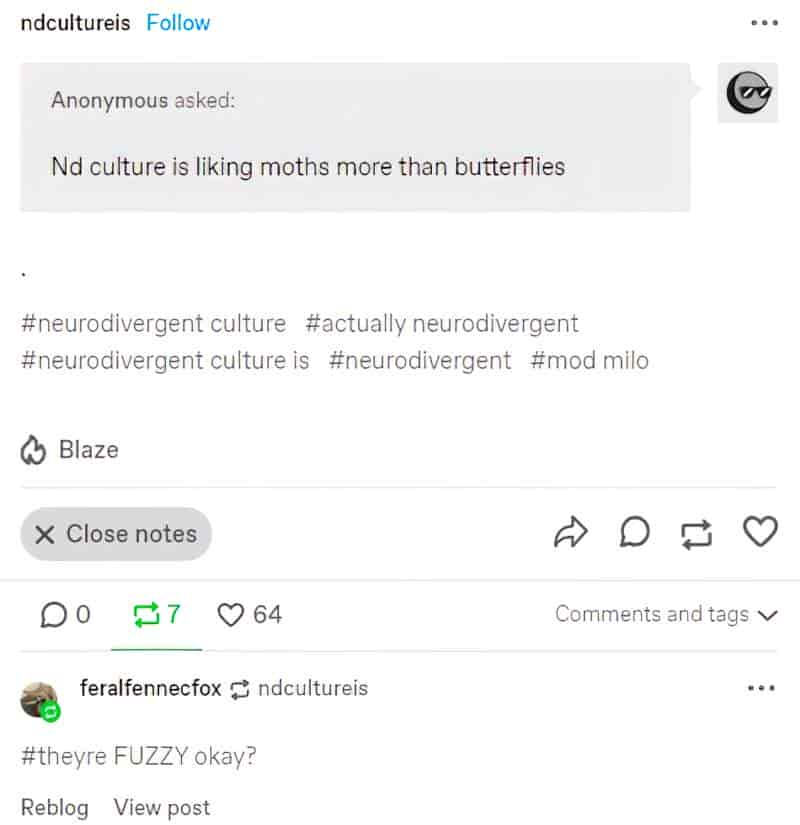
The vast majority of caterpillars have never been categorised so you can’t tell if an unfamiliar caterpillar will become a moth or a butterfly. If you’re placing a bet, call it a moth. The vast majority of caterpillars turn into moths.
But once they have wings, the job is easier. Moths tend to be stockier and have furry bodies, whereas butterflies are smooth and lean. This is due to the size of their scales. Butterflies have much smaller scales.
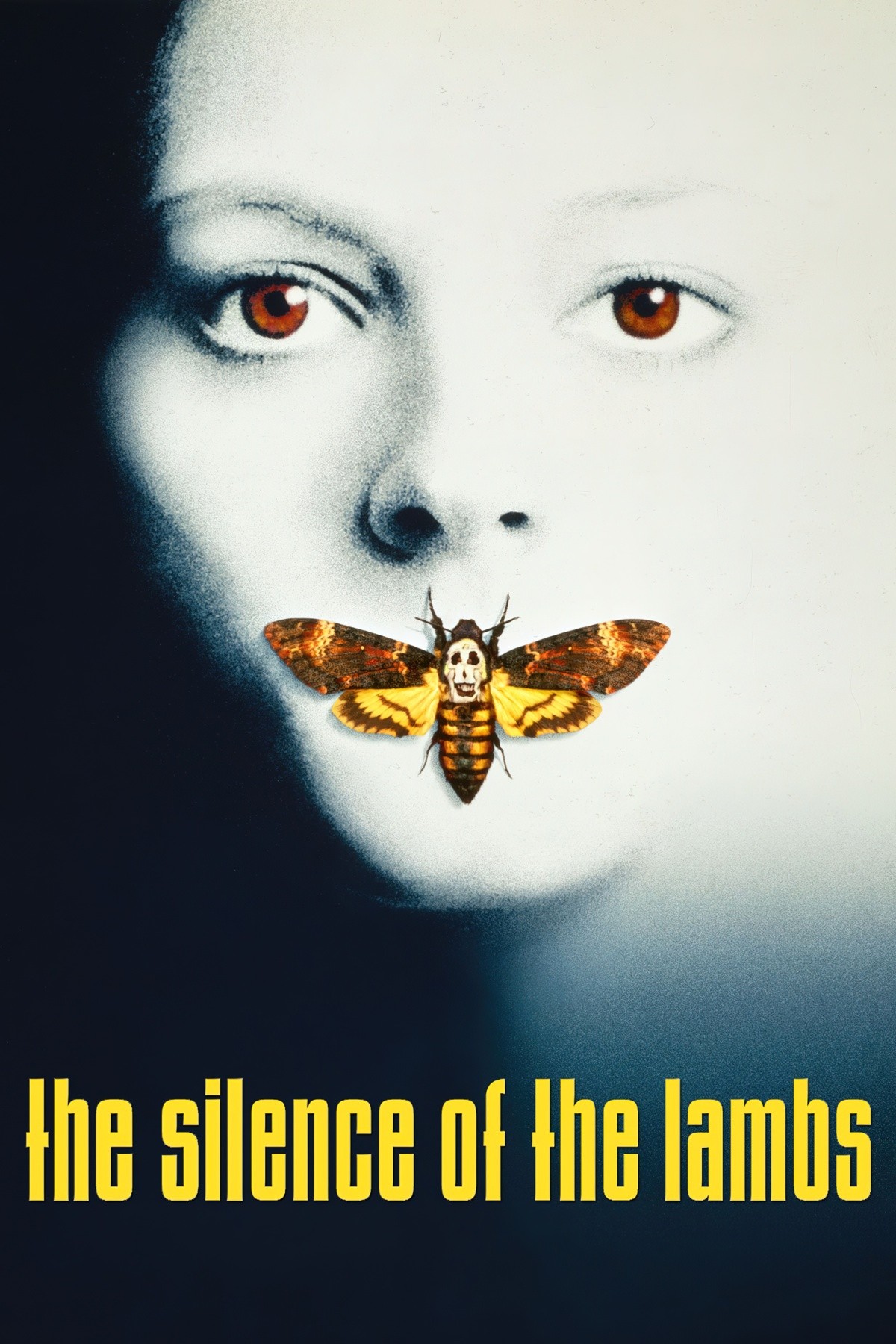
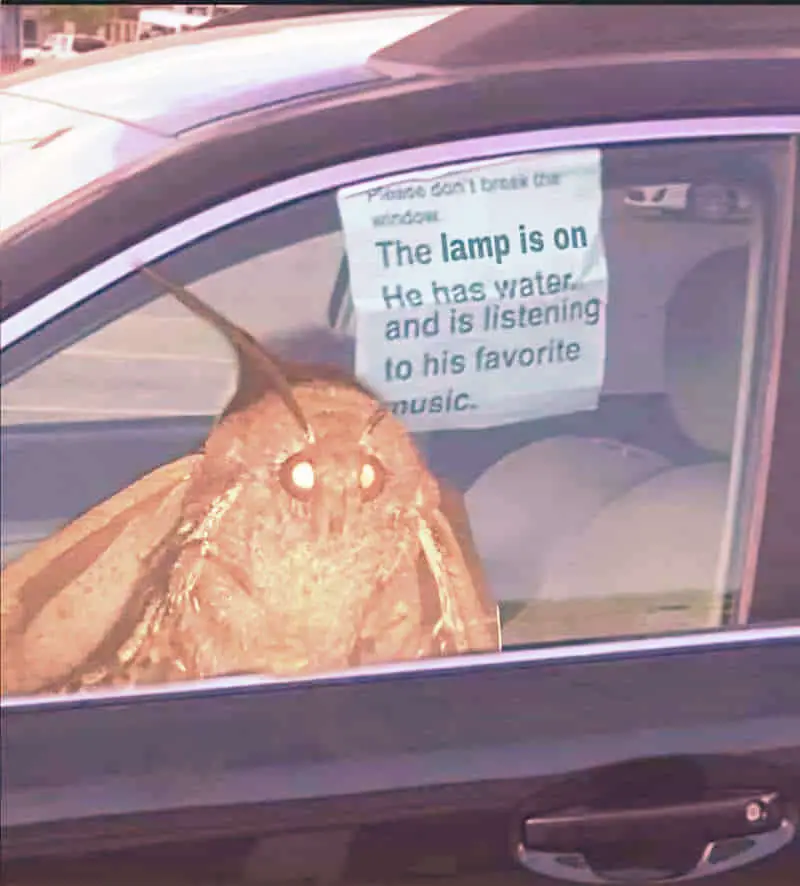

Translated into over thirteen languages and now a major motion picture, John Keel’s The Mothman Prophecy is an unsettling true story of the paranormal that has long been regarded as a classic in the literature of the unexplained.
West Virginia, 1966. For thirteen months the town of Point Pleasant is gripped by a real-life nightmare culminating in a tragedy that makes headlines around the world. Strange occurrences and sightings, including a bizarre winged apparition that becomes known as the Mothman, trouble this ordinary American community. Mysterious lights are seen moving across the sky. Domestic animals are found slaughtered and mutilated. And journalist John Keel, arriving to investigate the freakish events, soon finds himself an integral part of an eerie and unfathomable mystery.
The Mothman Prophecy is the basis of the 2002 film starring Richard Gere.
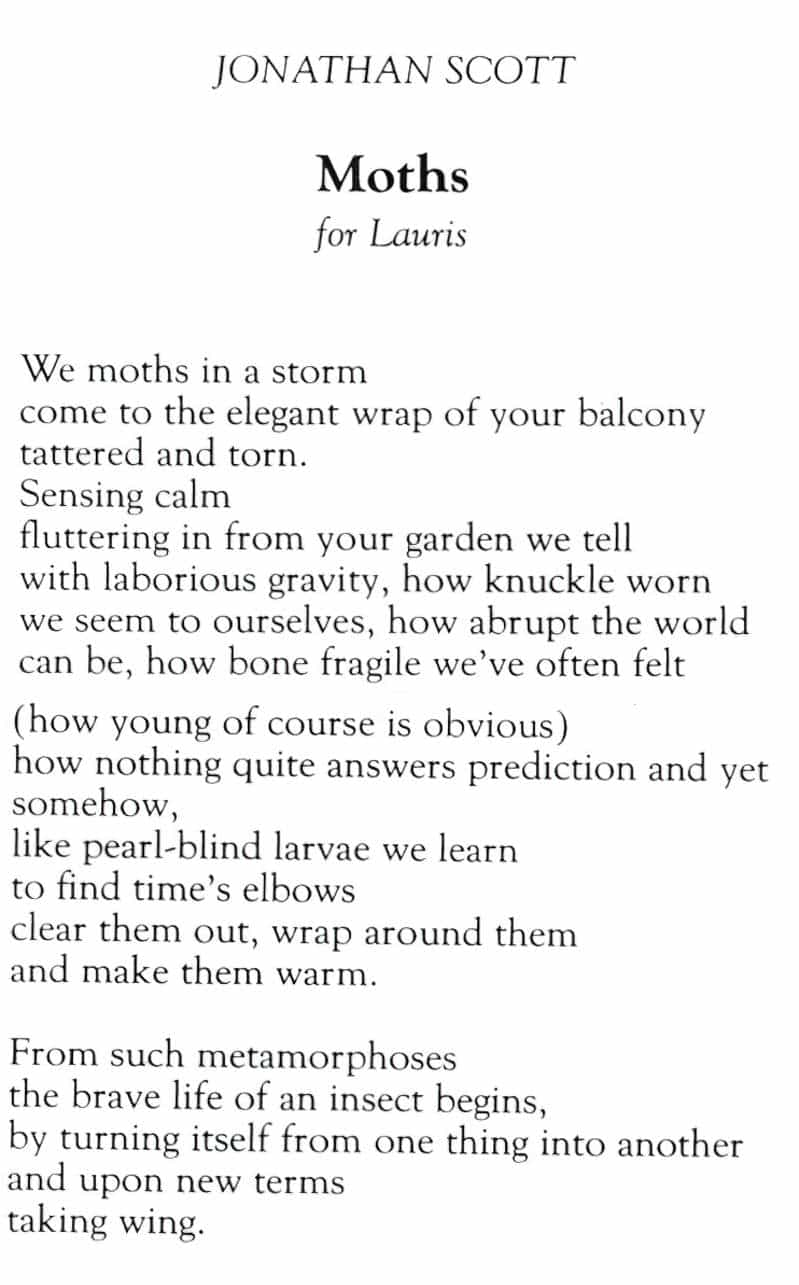
WHY MOTHS ARE VIEWED MORE NEGATIVELY THAN BUTTERFLIES
- Moths are active at night, and humans find the night-time scary because we can’t see predators. In contrast, butterflies flap around during the day. This isn’t because they are less evil, but because their bodies need to be 85 degrees Fahrenheit (29 Celcius) before they can fly. (Moths also need heat, but they generate their own warmth. They vibrate their wings.)
- Because moths like the dark, they’re in the habit of hiding in your chimneys, walls, cabinets and closets, sometimes surprising you when you open them up. They might be munching your expensive cashmere in there, too. However, if the moth already has wings, it won’t be chewing through your textiles. Only the larvae do that. The larvae also like other expensive textiles such as silk.
- They have the same diet: tree sap, fruit juices and dung. But because of negative ideas around moths, if you see a little winged creature on a poo, you might automatically assume it’s a moth. It could well be a butterfly.
- Scales. We associate scales with reptiles. Butterflies also have scales but they’re much smaller, so look like mammalian fur. We are mammals ourselves, and more familiar with mammalian fur.
- Colour. We associate colour and beauty with butterflies. Not all butterflies are brightly coloured e.g. the baron butterfly and the cabbage butterfly, which is white. However, these are exceptionally dull for butterflies. In general, butterflies are beautiful whereas moths are brownish, black and dull. This is the Halo Effect at work. (We are nicer to beautiful people, too.)
- Underground. Some moths transform in the ground. This isn’t true for butterflies, whose chrysalis hangs from a plant or something. Humans tend to be a bit sketchy when it comes to things from the underground.
Moths, like butterflies, carry the symbolism of transformation and rebirth, but also death, endings, and the mysteries of the night.
Here’s the thing about beloved butterflies: Once they get wings, their only job is mating and laying eggs. They are basically flying penises. Their one mission in life is to reproduce. This fertilises plants. And because plants can’t move, they must wait for the fertilisers to come to them. Hence the wings.
Our survival is dependent on insects. They are an important part of the food chain, and also vital pollinators for our food.
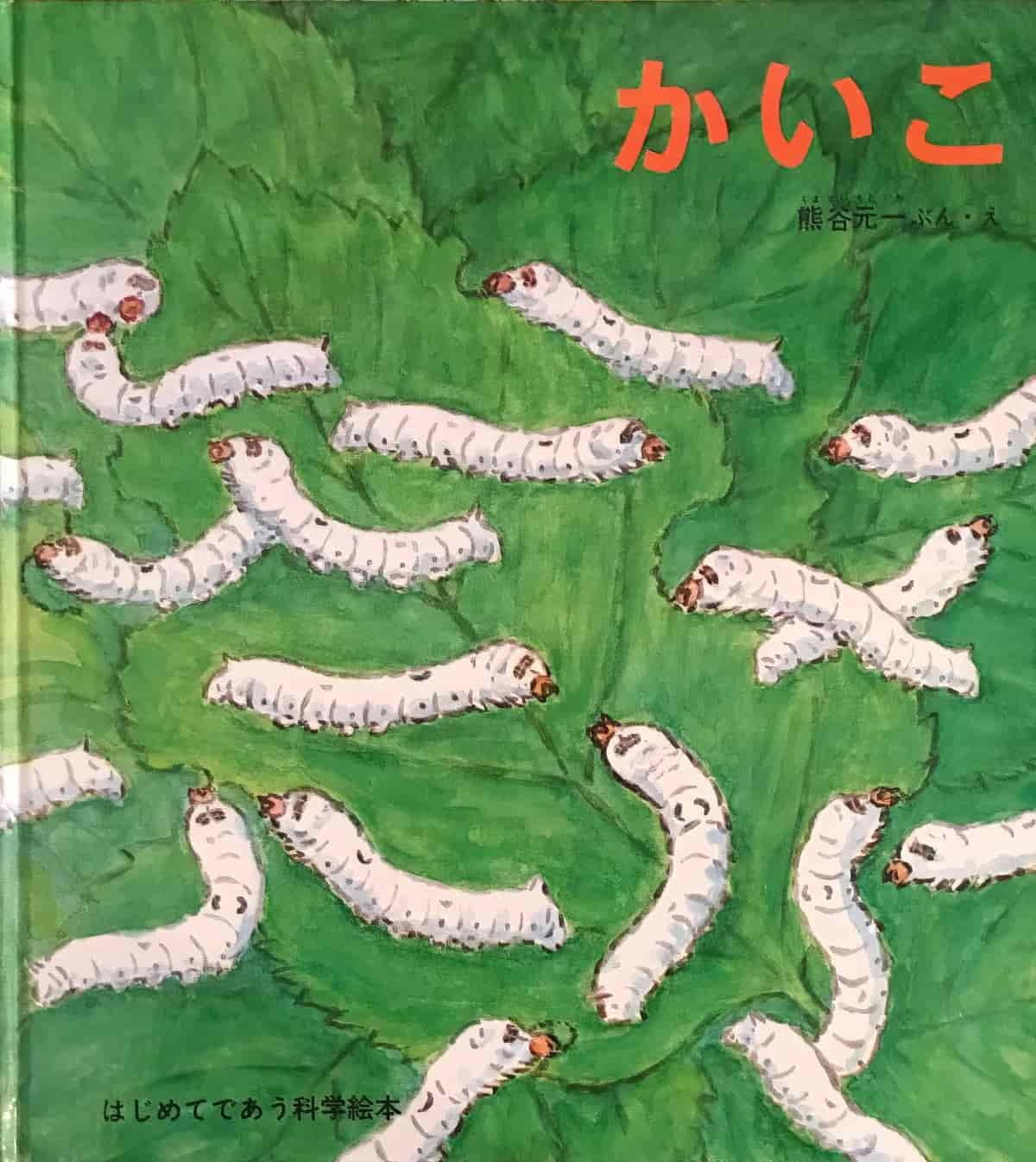
If you’d like to entice more butterflies to your garden, try planting milkweed, coneflowers, hyssop and asters.
SEE ALSO
Adult butterflies and moths have large, often brightly coloured wings, and conspicuous, fluttering flight. The group comprises the true butterflies, the skippers and the moth-butterflies.
Symbolic Butterfly Meanings Interpreting animal symbolism is a powerful way to connect with nature, and learn lessons from her creatures – lessons that we can apply to our own lives. Observing the butterfly and learning her symbolic meanings offers us an opportunity to apply her movements to our own lives. For example, we can relate the butterfly’s stages of life to our own life-phases…growing pains, times of ravenous hunger, times of vulnerability, moments of miraculous expansion. The more we seek symbolism in nature, the more we realize we have a lot in common with animals, insects and life in the wild realms. Indeed, we are intimately connected with the animal queen/kingdom – inseparable from nature and her movements.
Overwhelmingly, cultural myth and lore honor the butterfly as a symbol of transformation because of its impressive process of metamorphosis. From egg, to larvae (caterpillar), to pupa (the chrysalis or cocoon) and from the cocoon the butterfly emerges in her unfurling glory. What a massive amount of transition this tiny creature undergoes. Consider for a moment the kind of energy this expends. We daresay if a human were to go through this kind of change we’d freak out! This unwavering acceptance of her metamorphosis is also symbolic of faith. Here the butterfly beckons us to keep our faith as we undergo transitions in our lives. She understands that our toiling, fretting and anger are useless against the turning tides of nature – she asks us to recognize the same.
The Hurd Mentality Podcast, 8 September 2015
Header painting: Odilon Redon, Butterflies, 1910, oil on canvas
